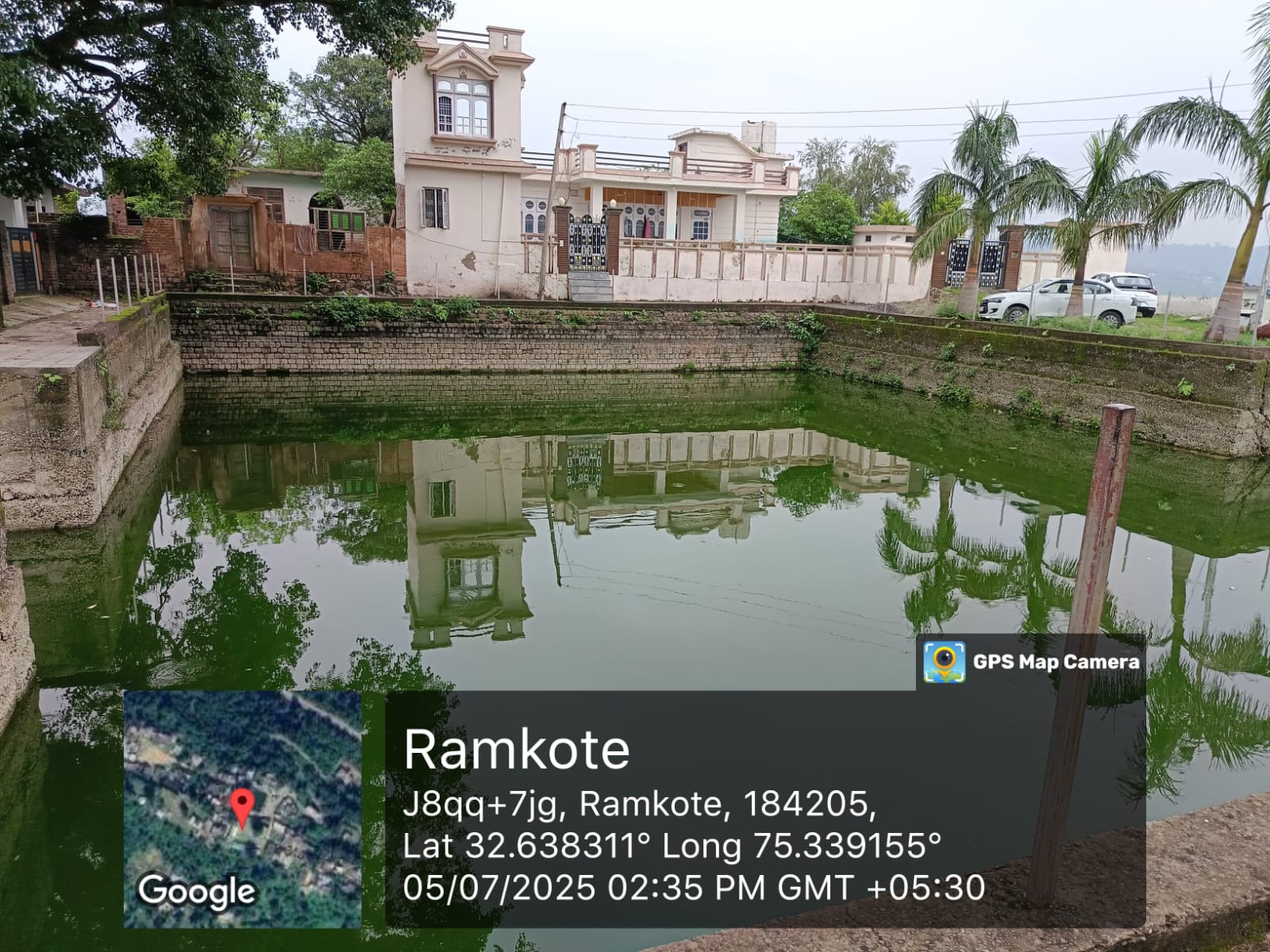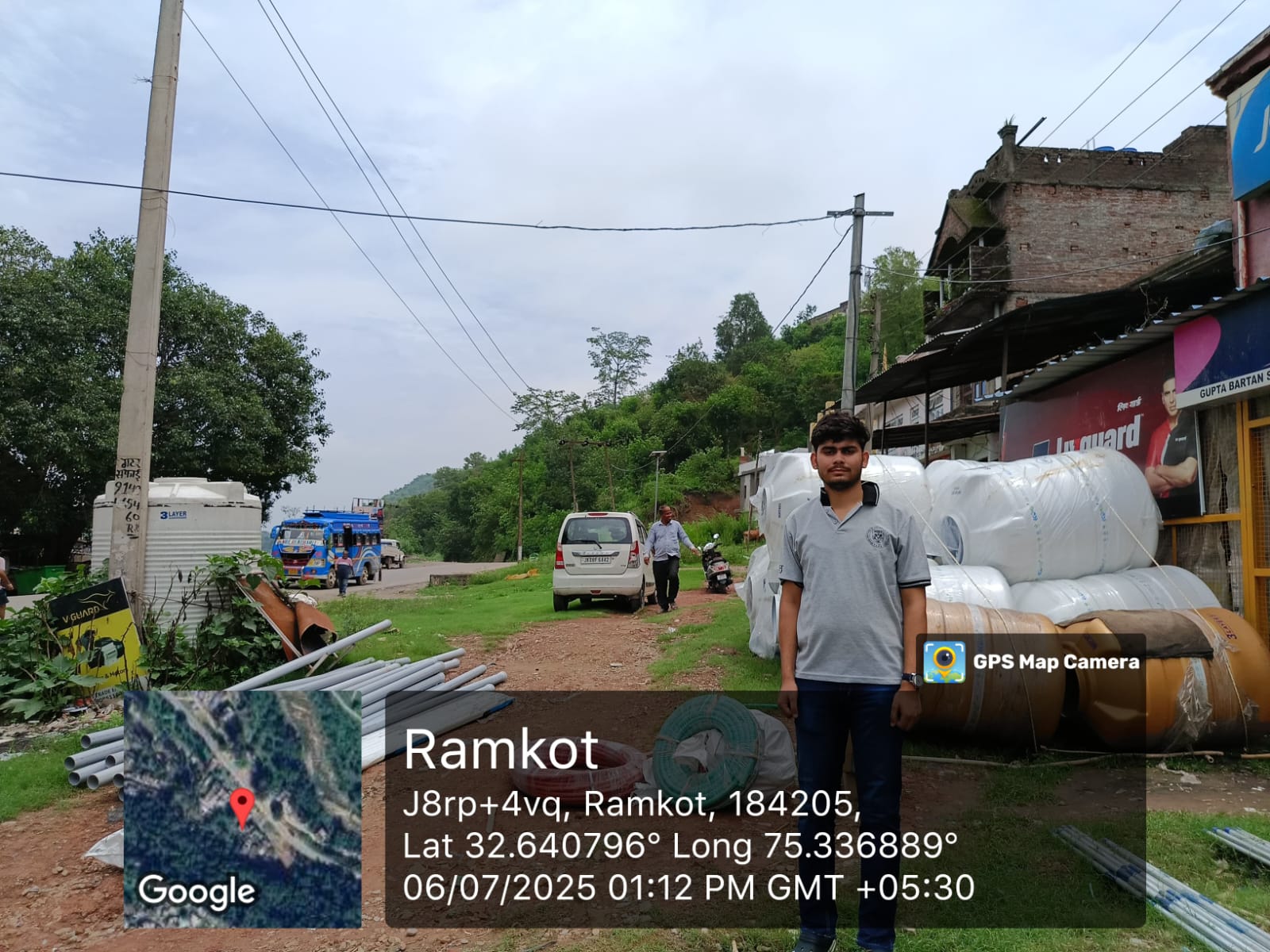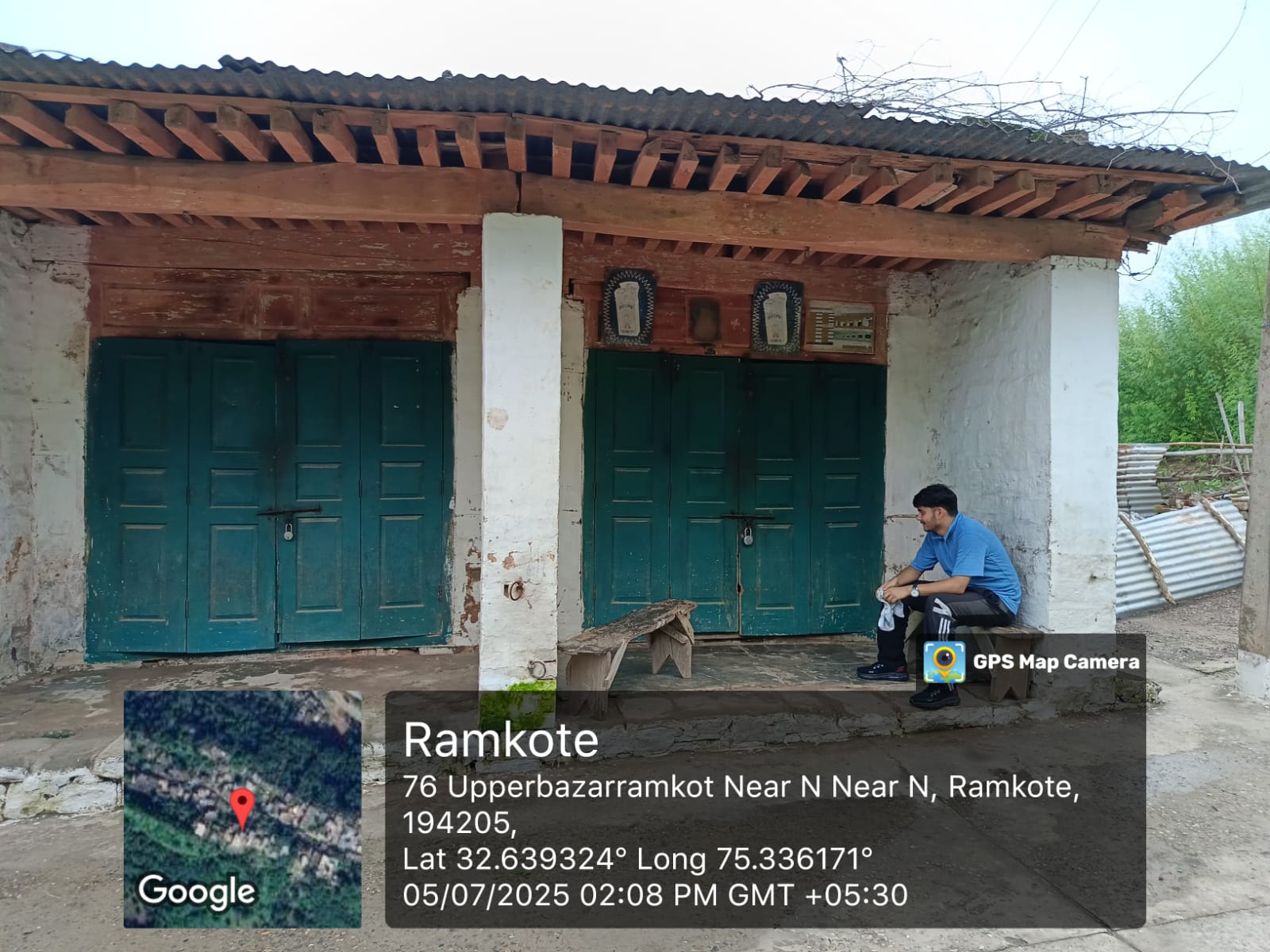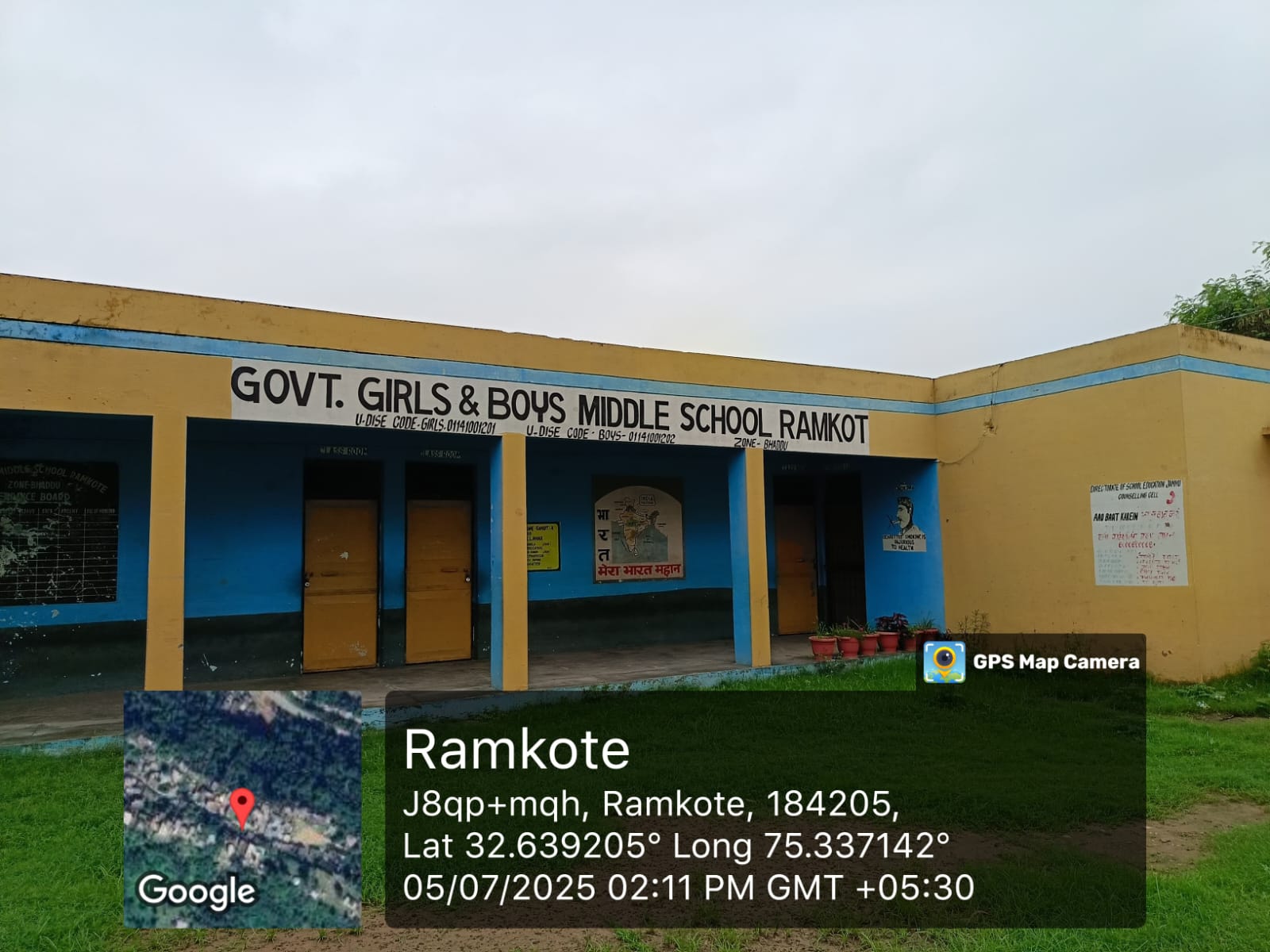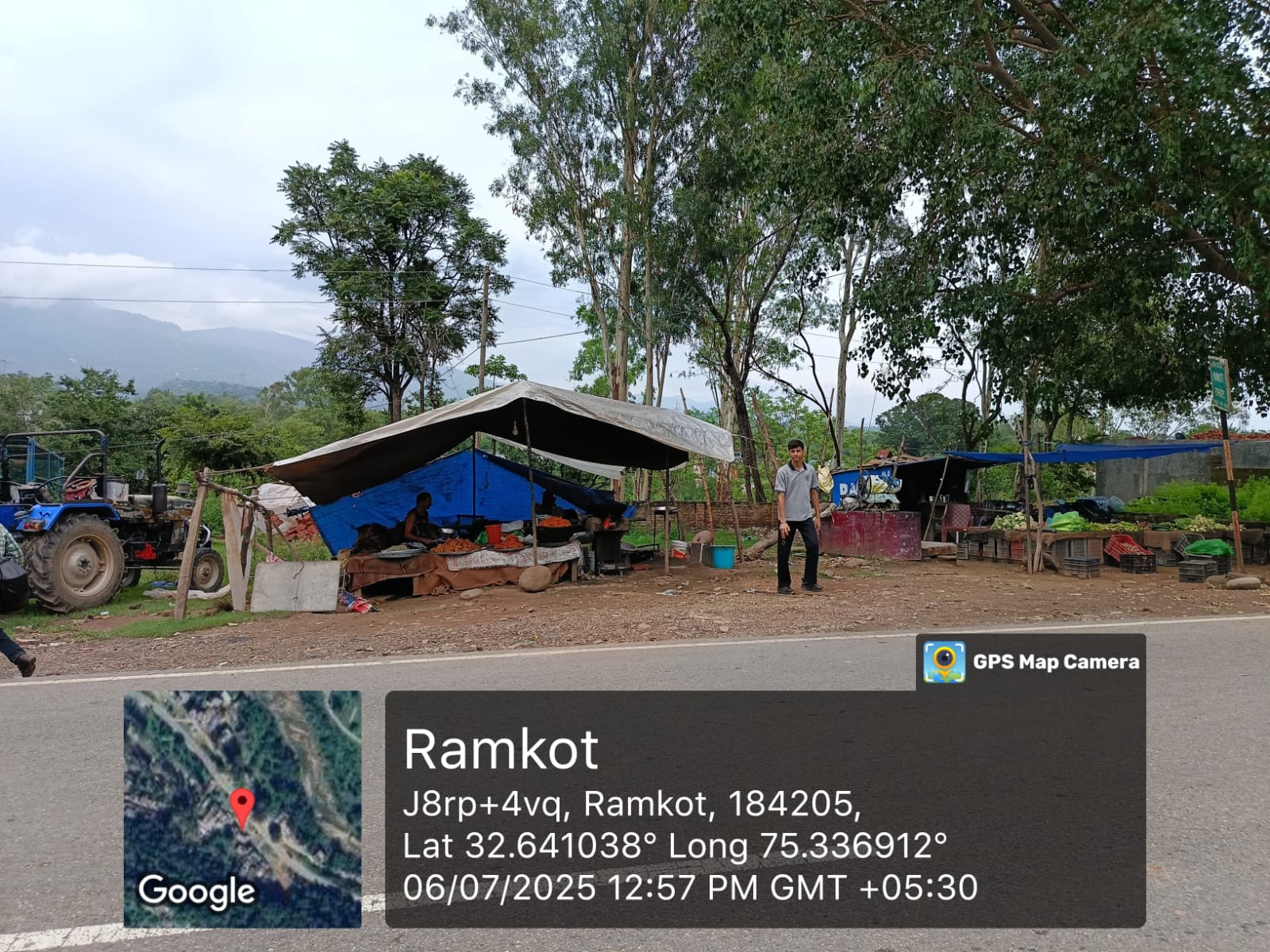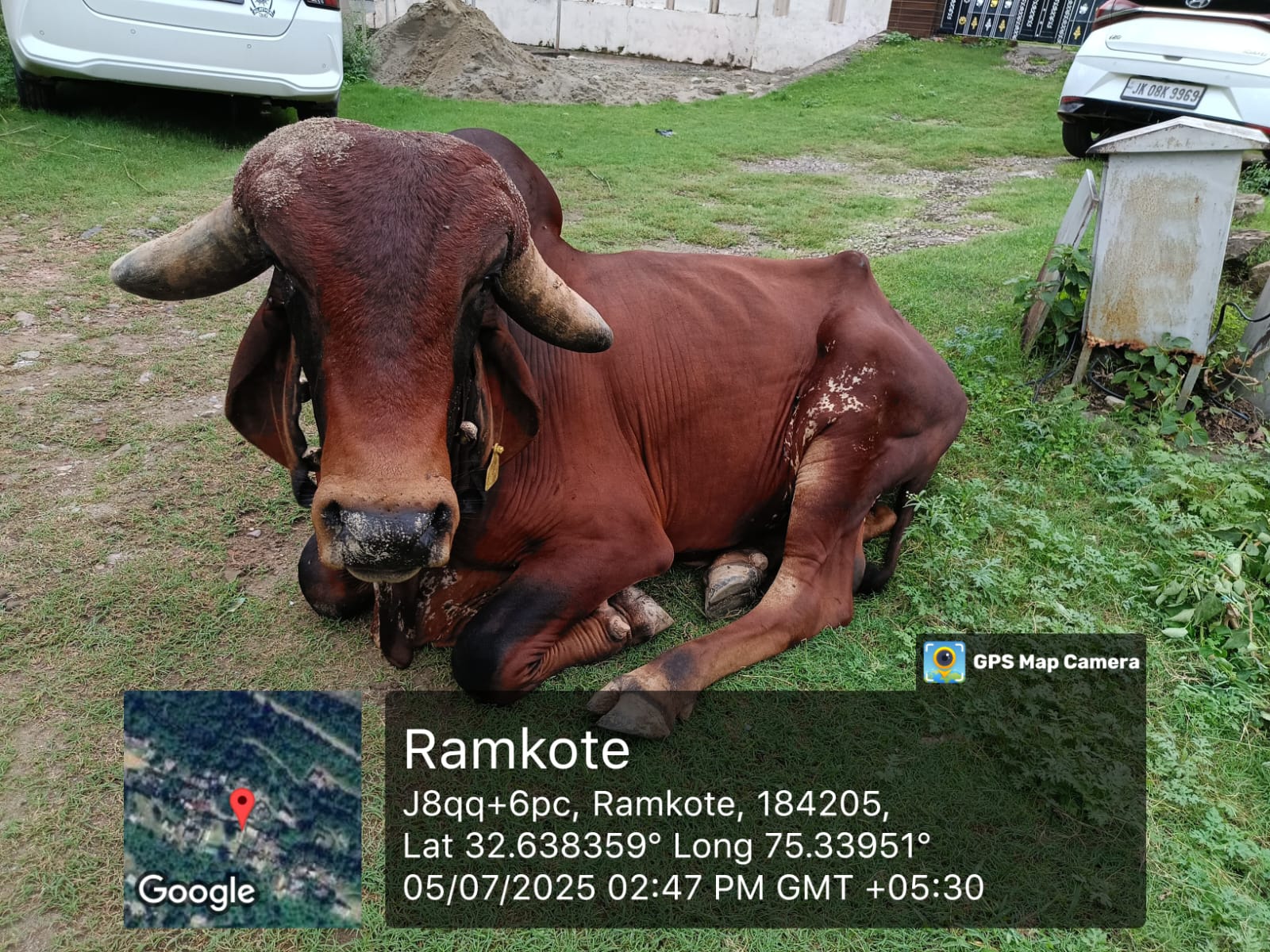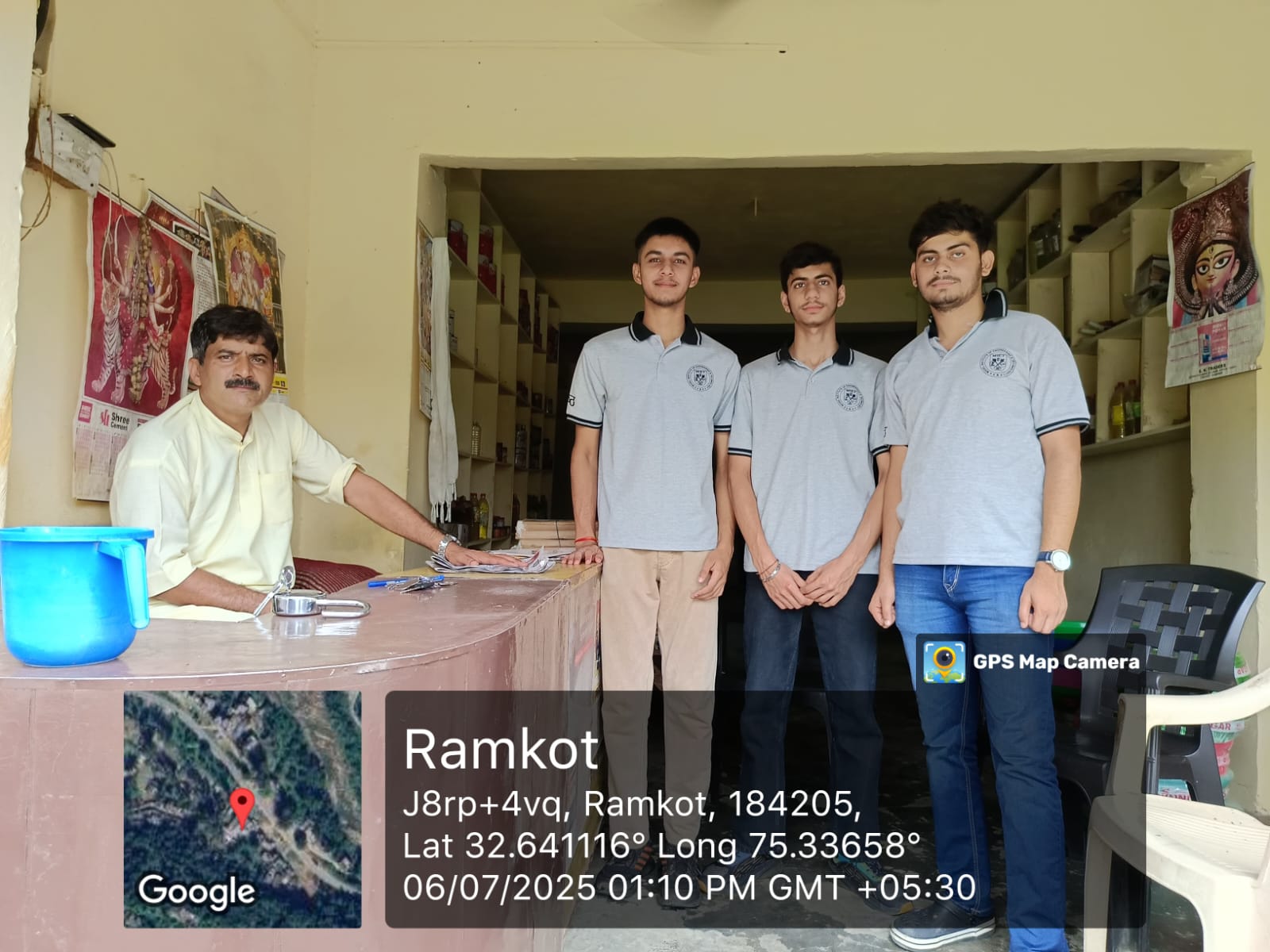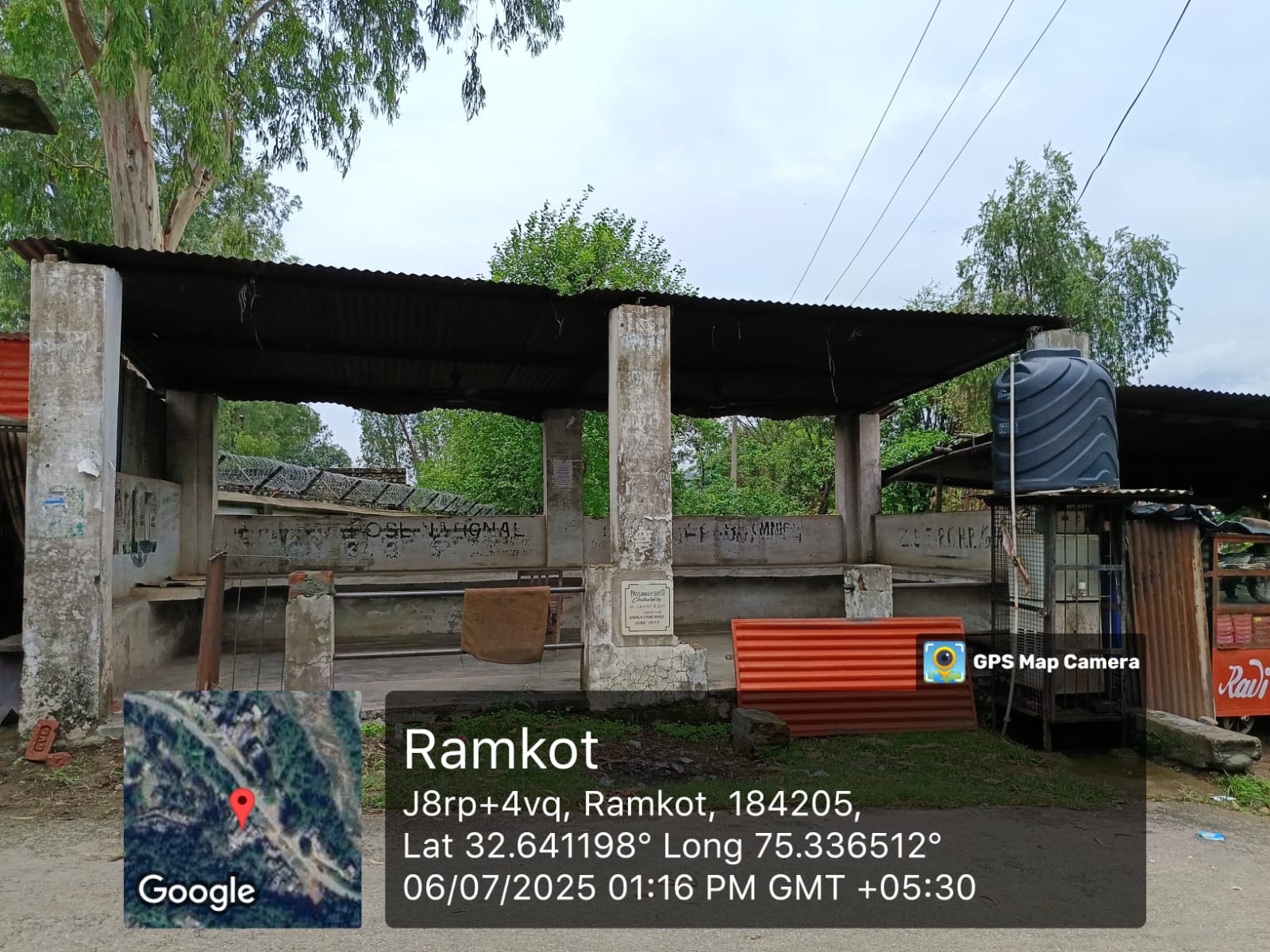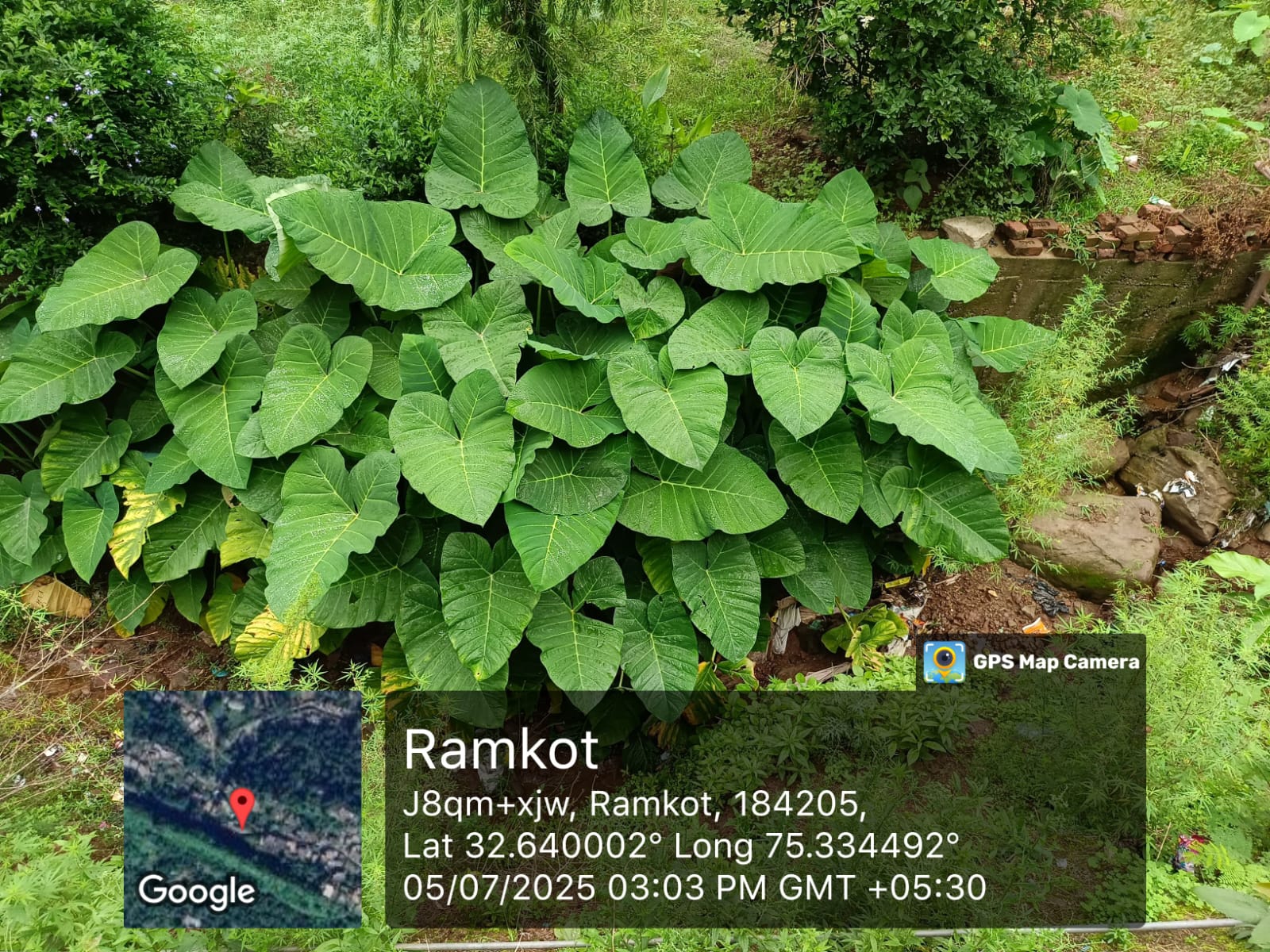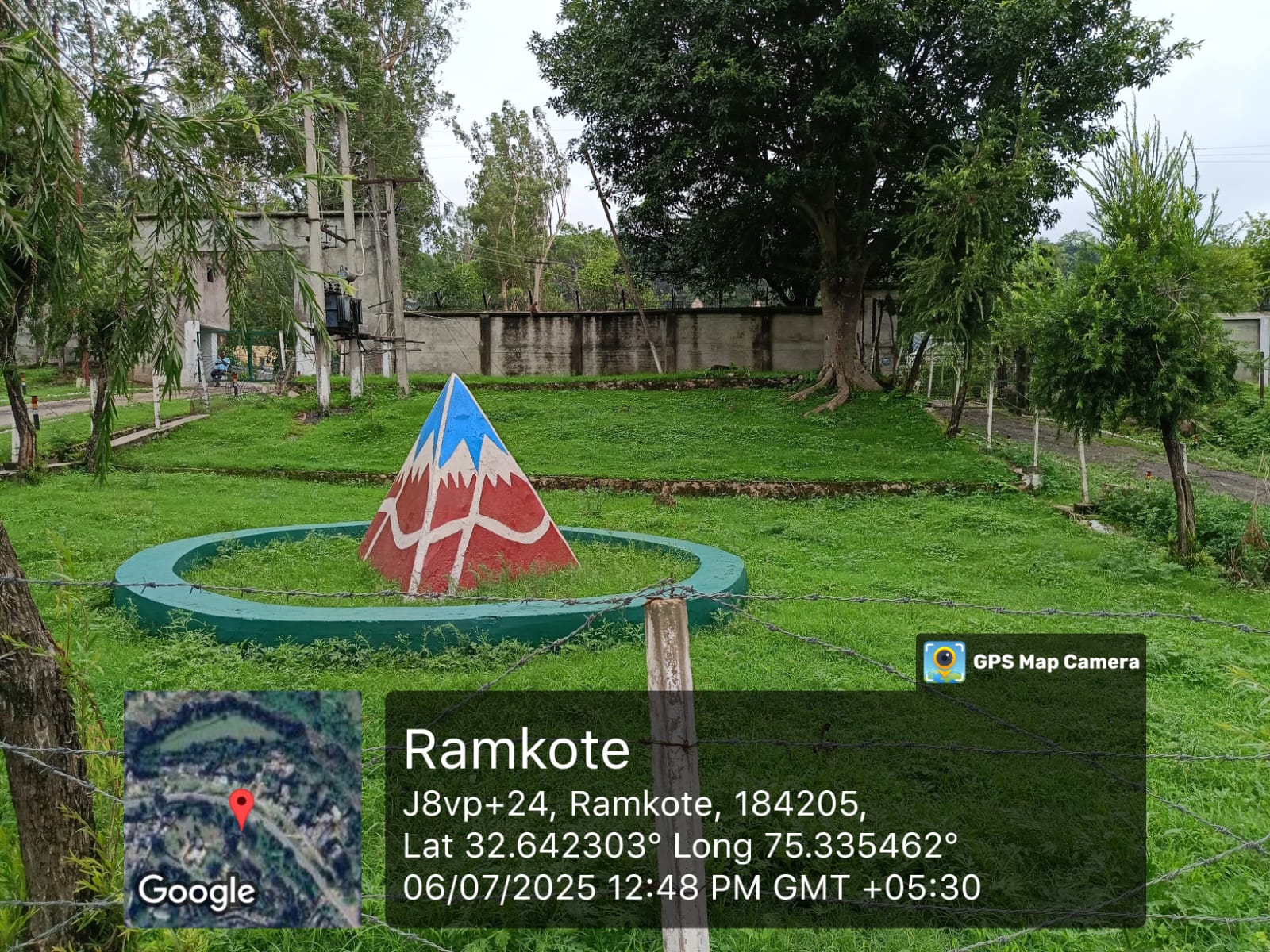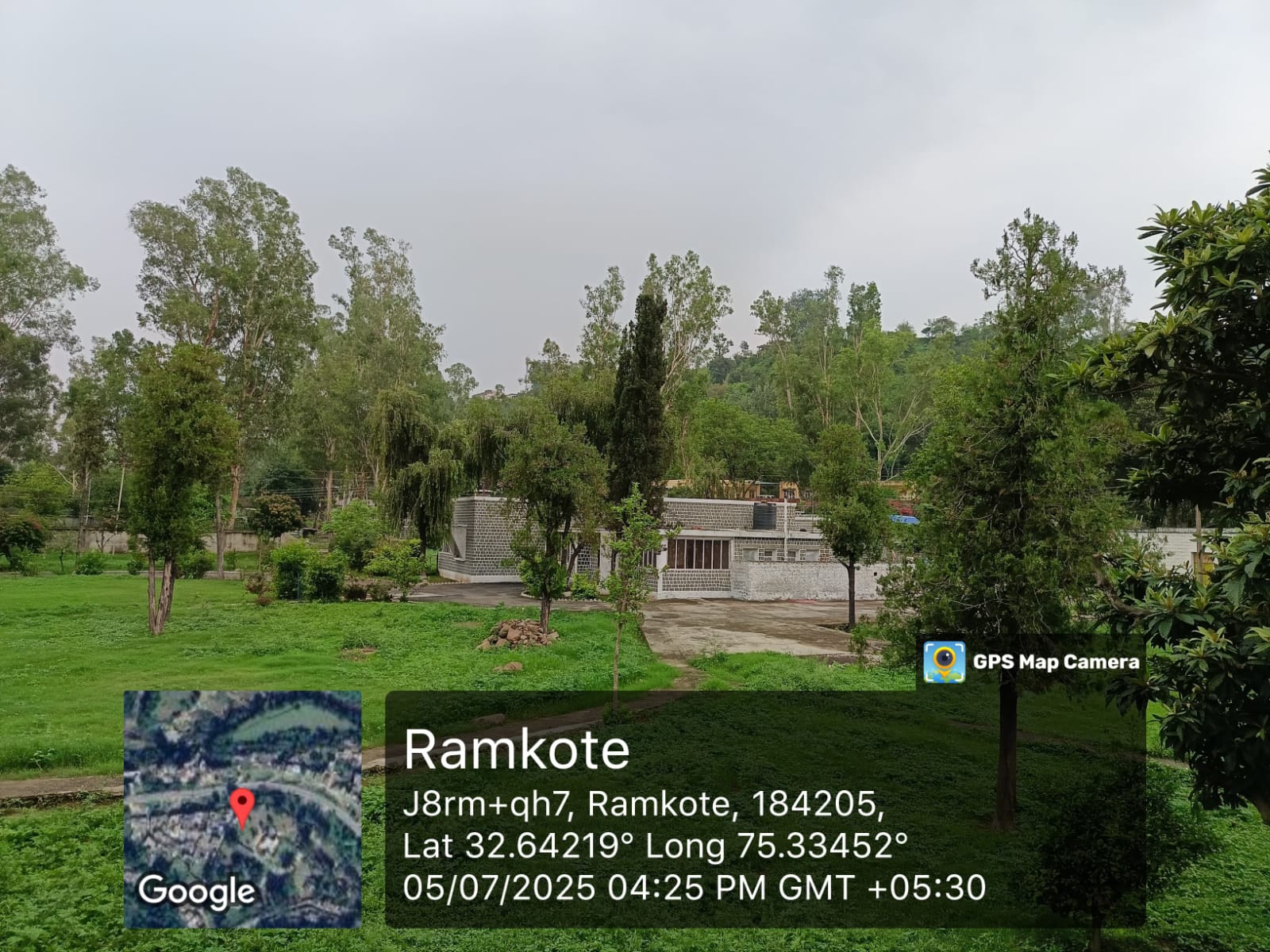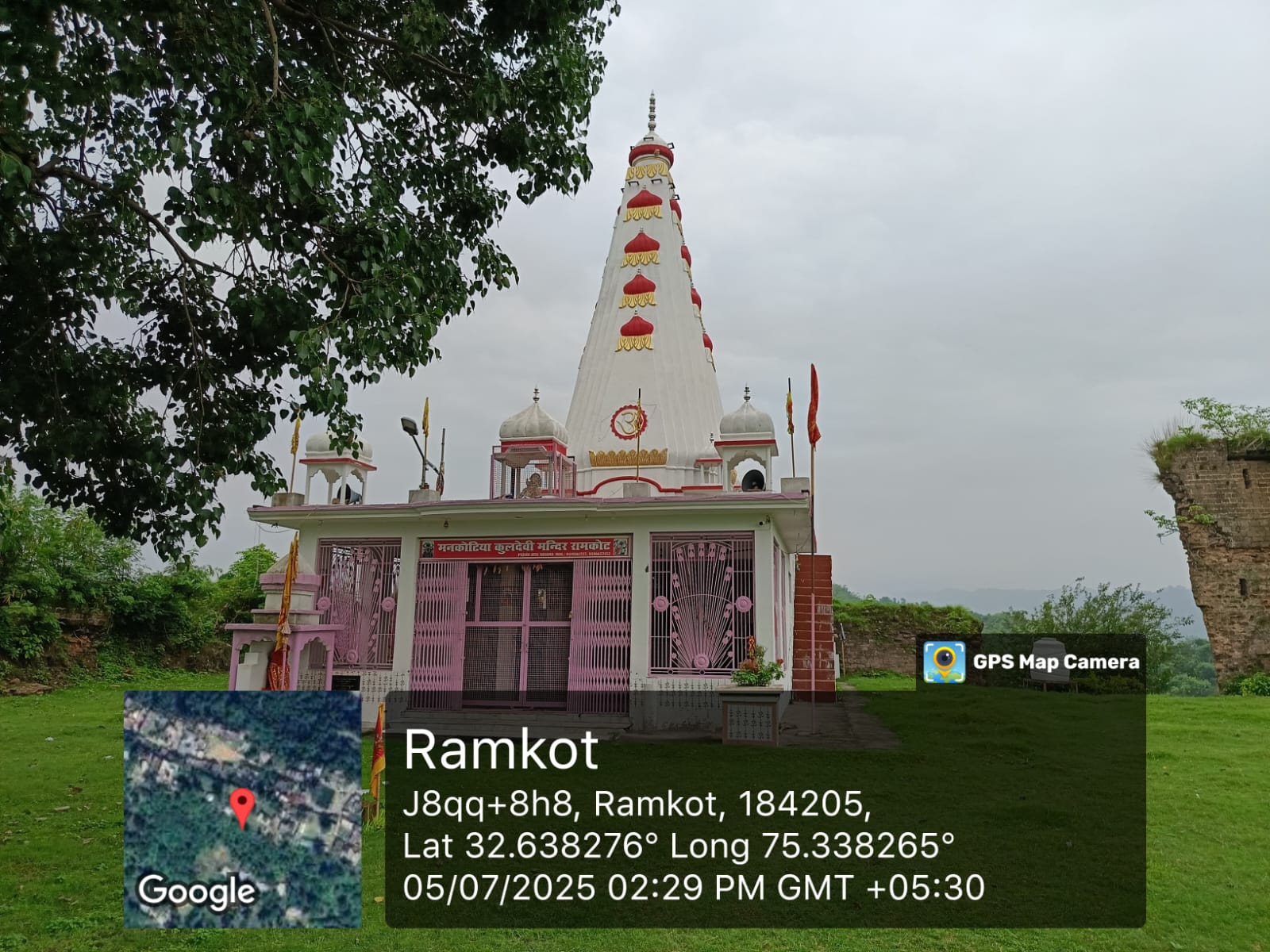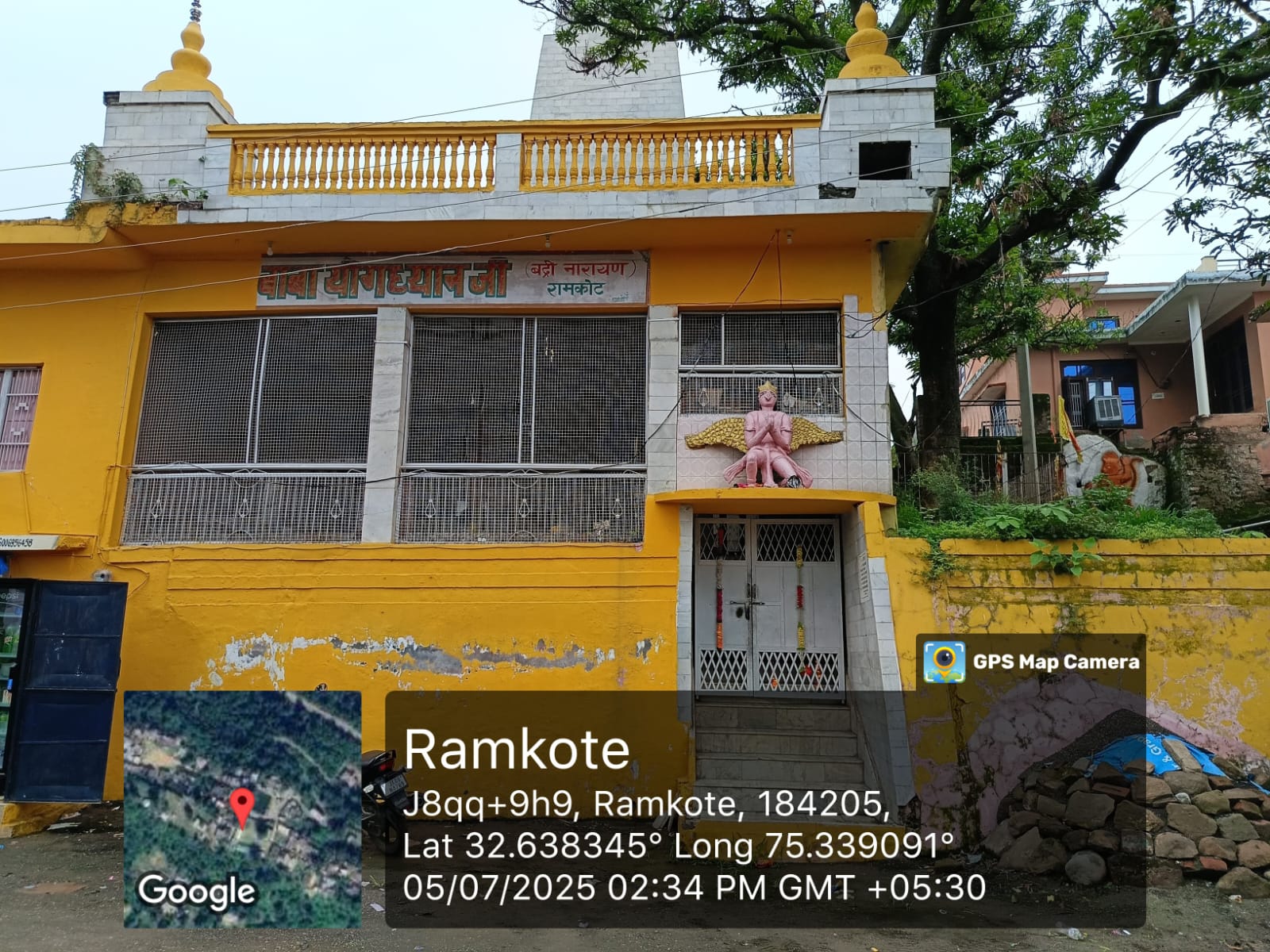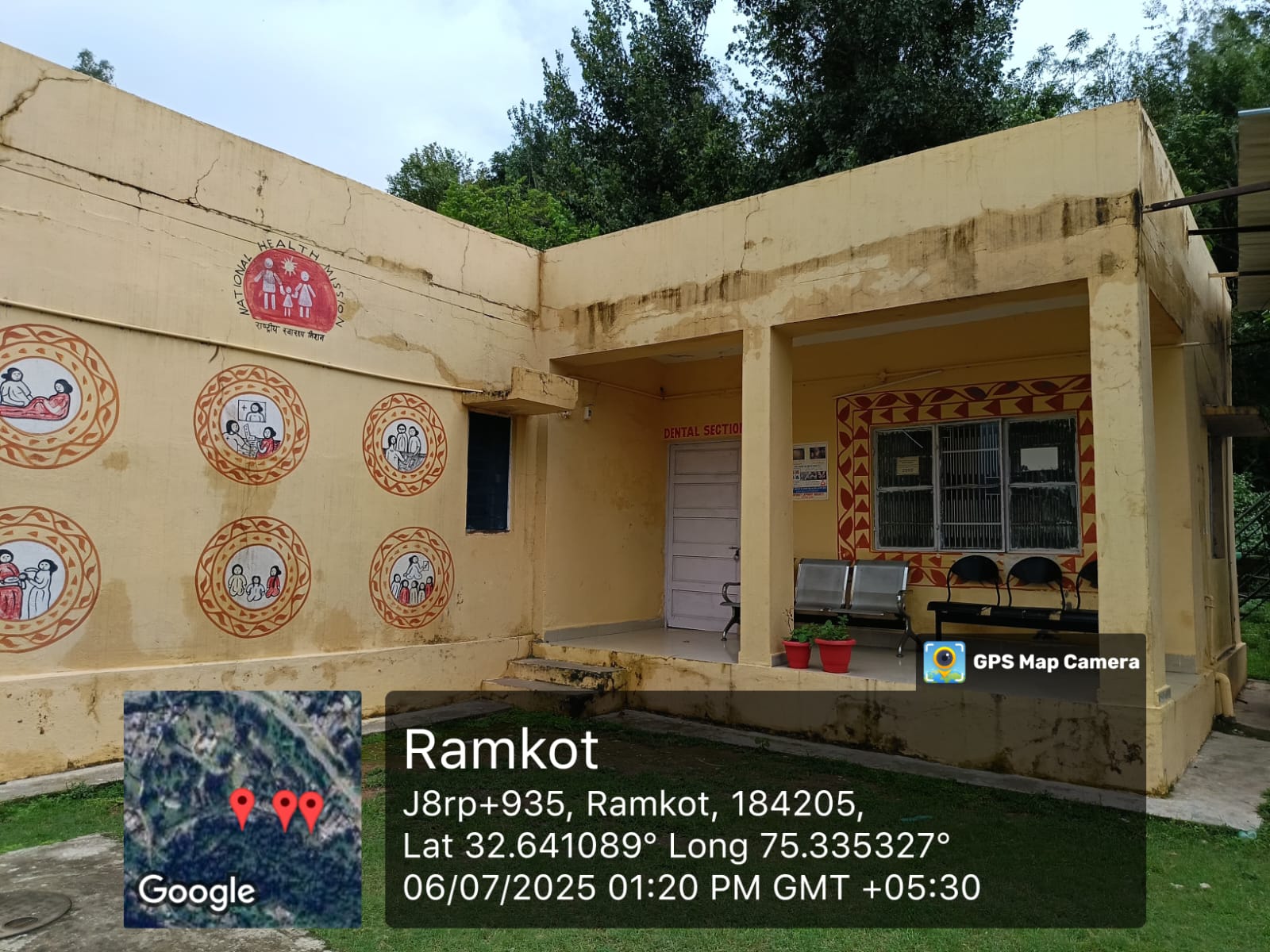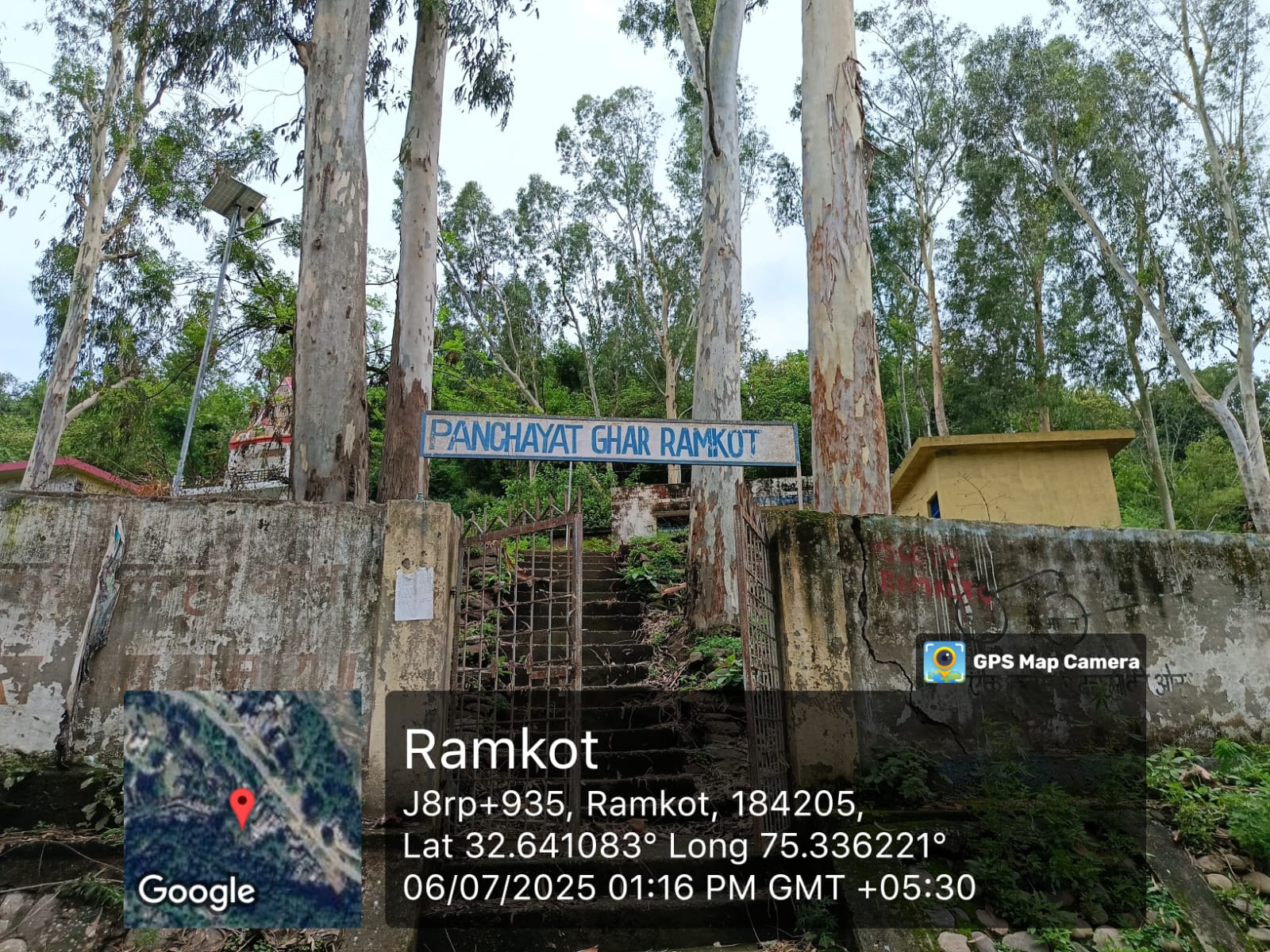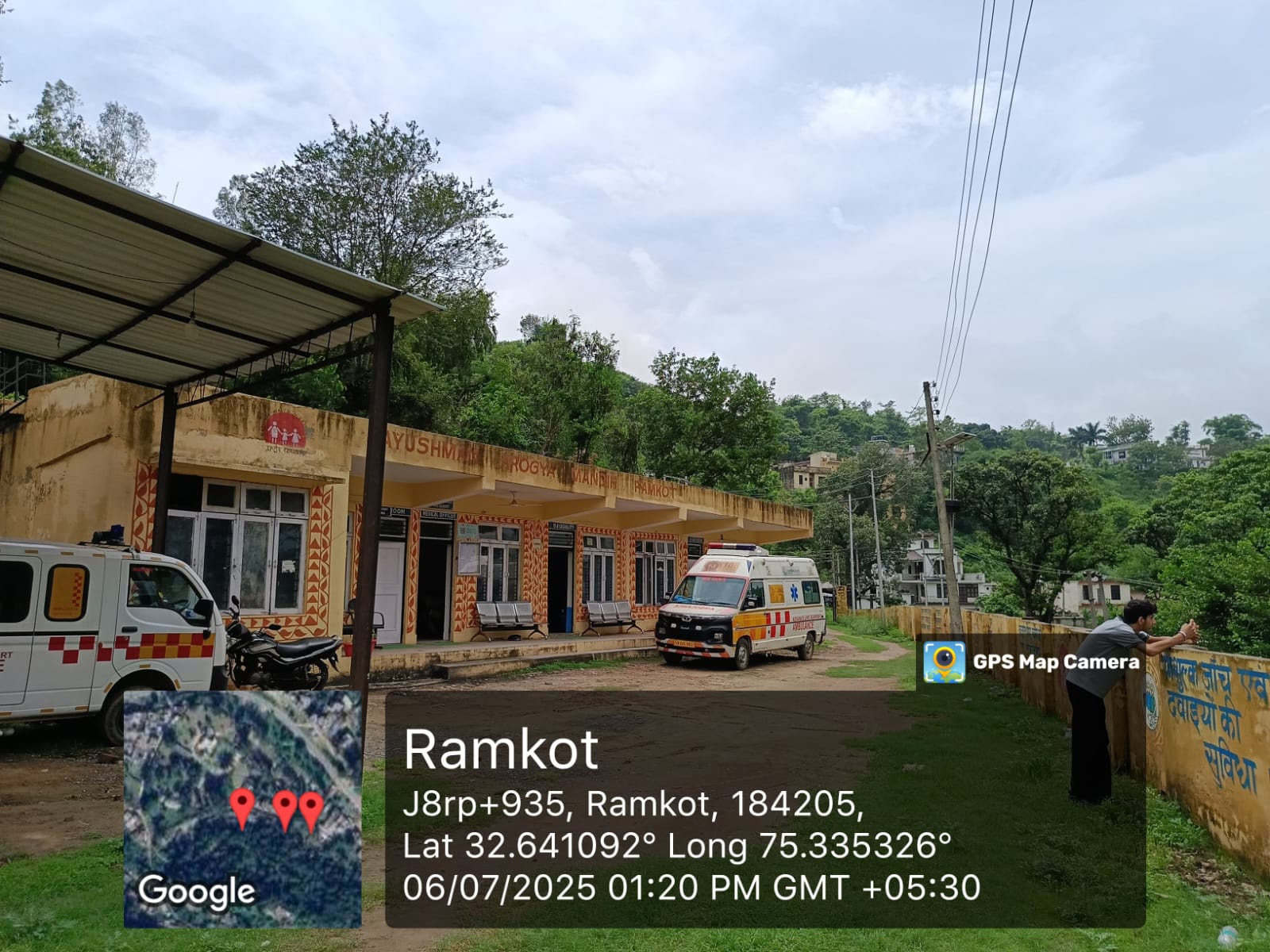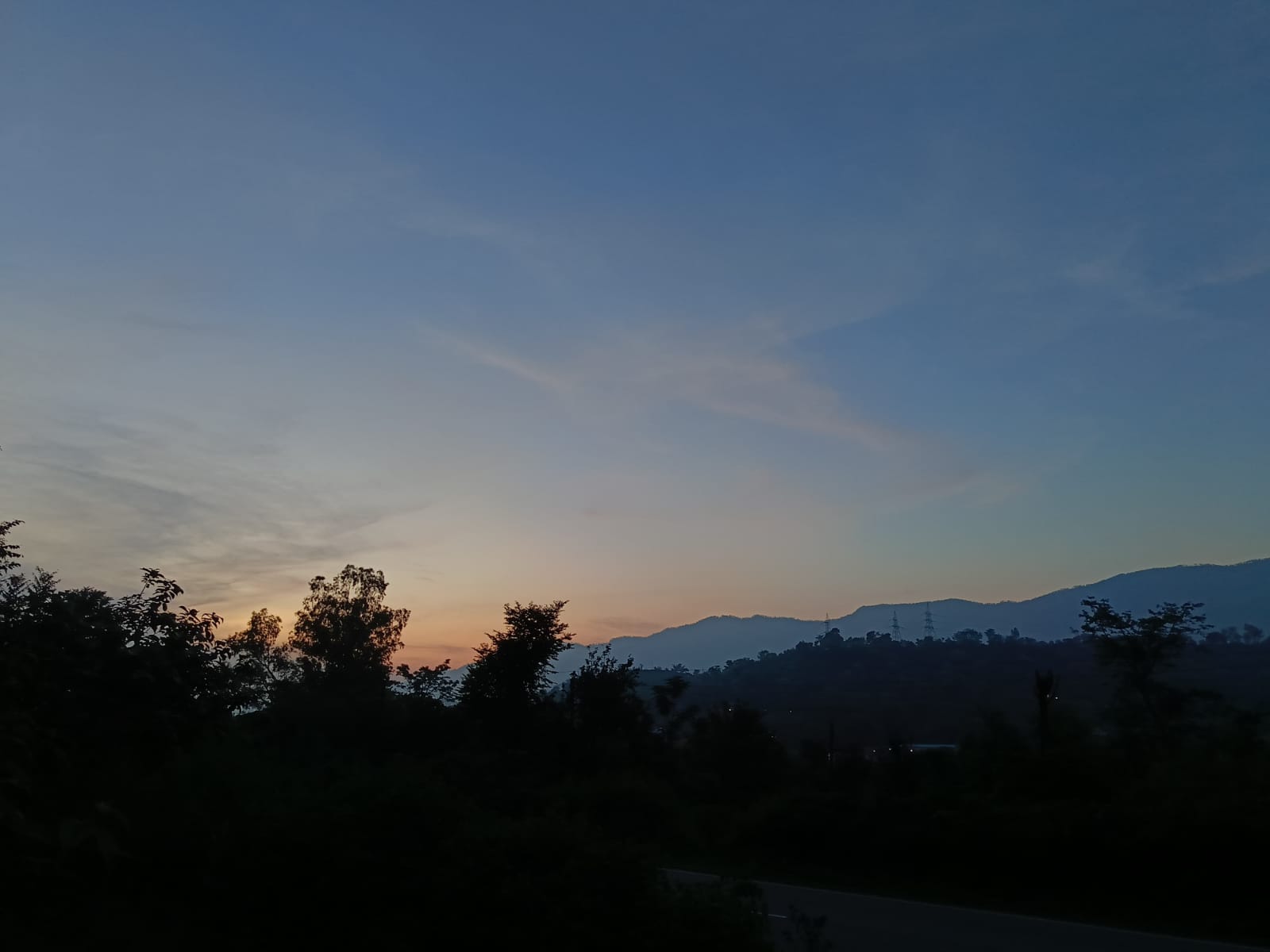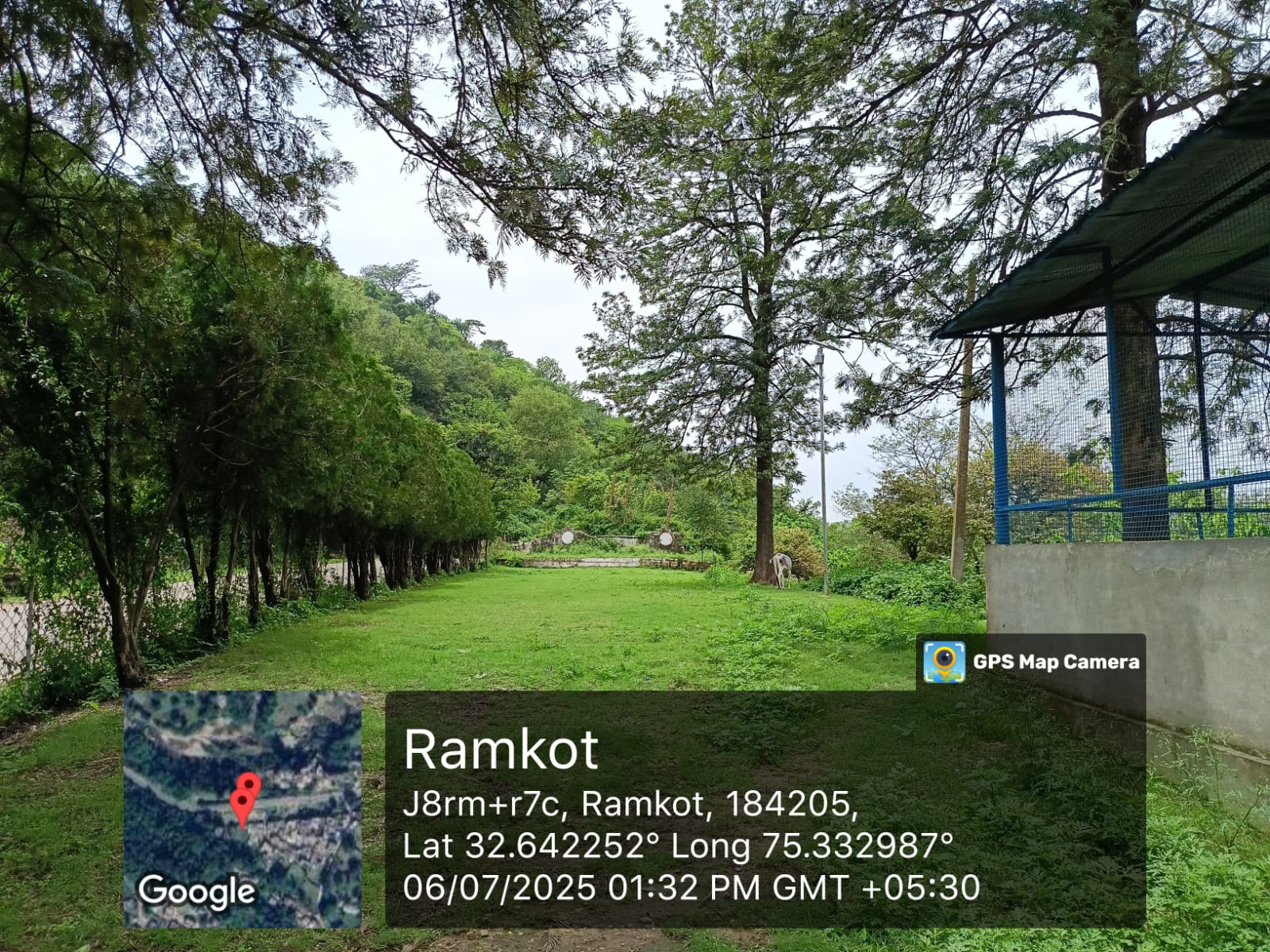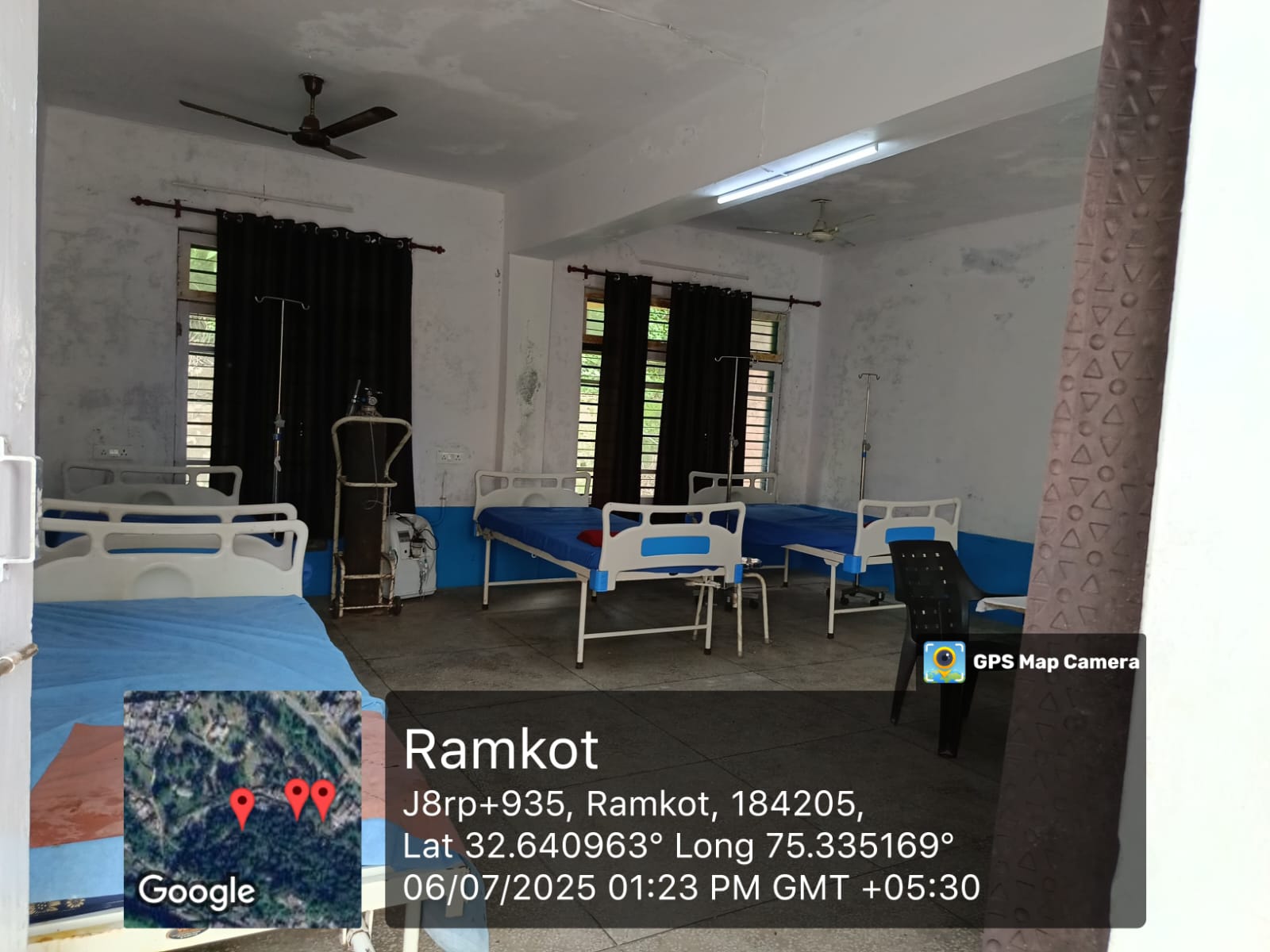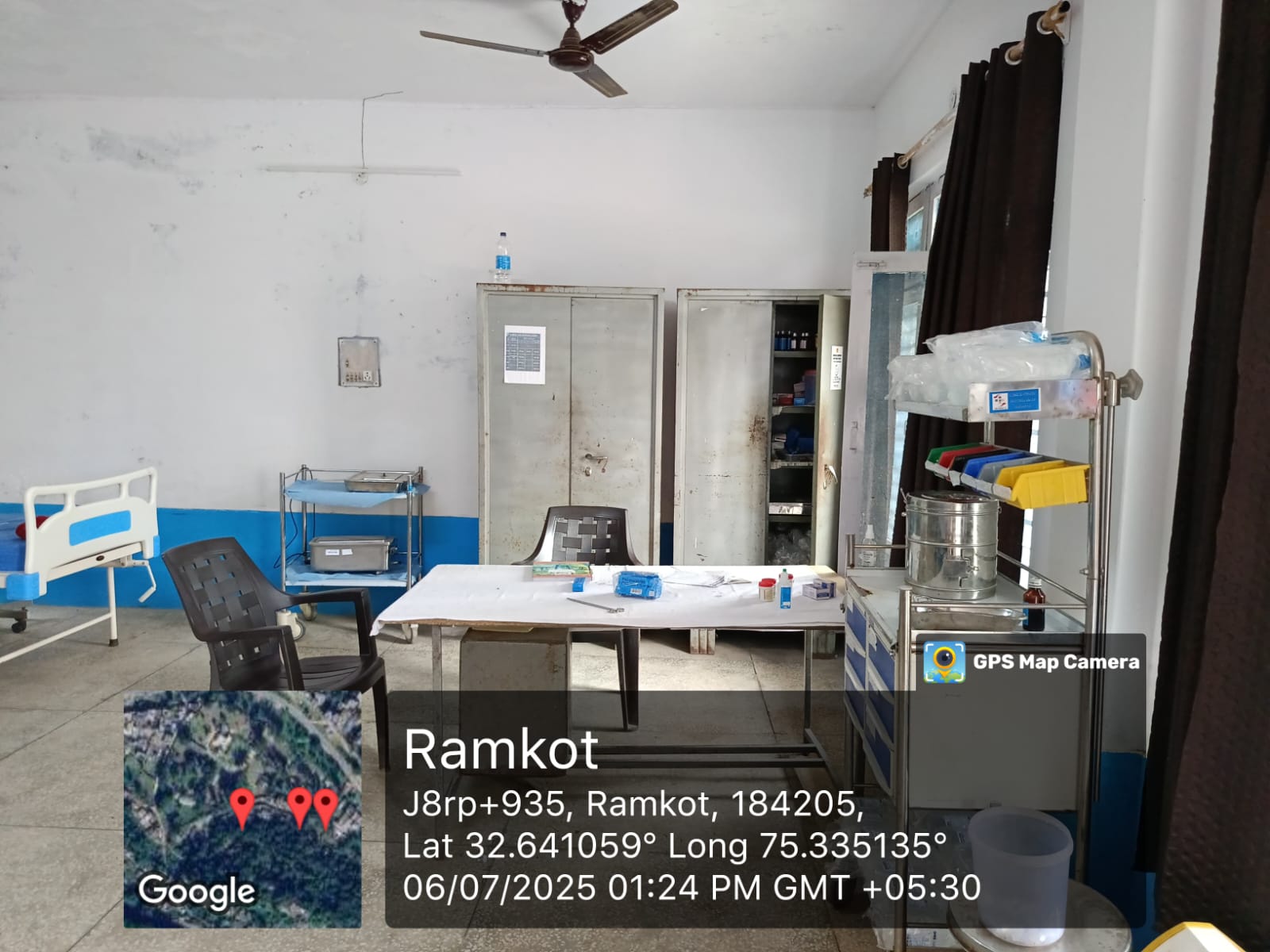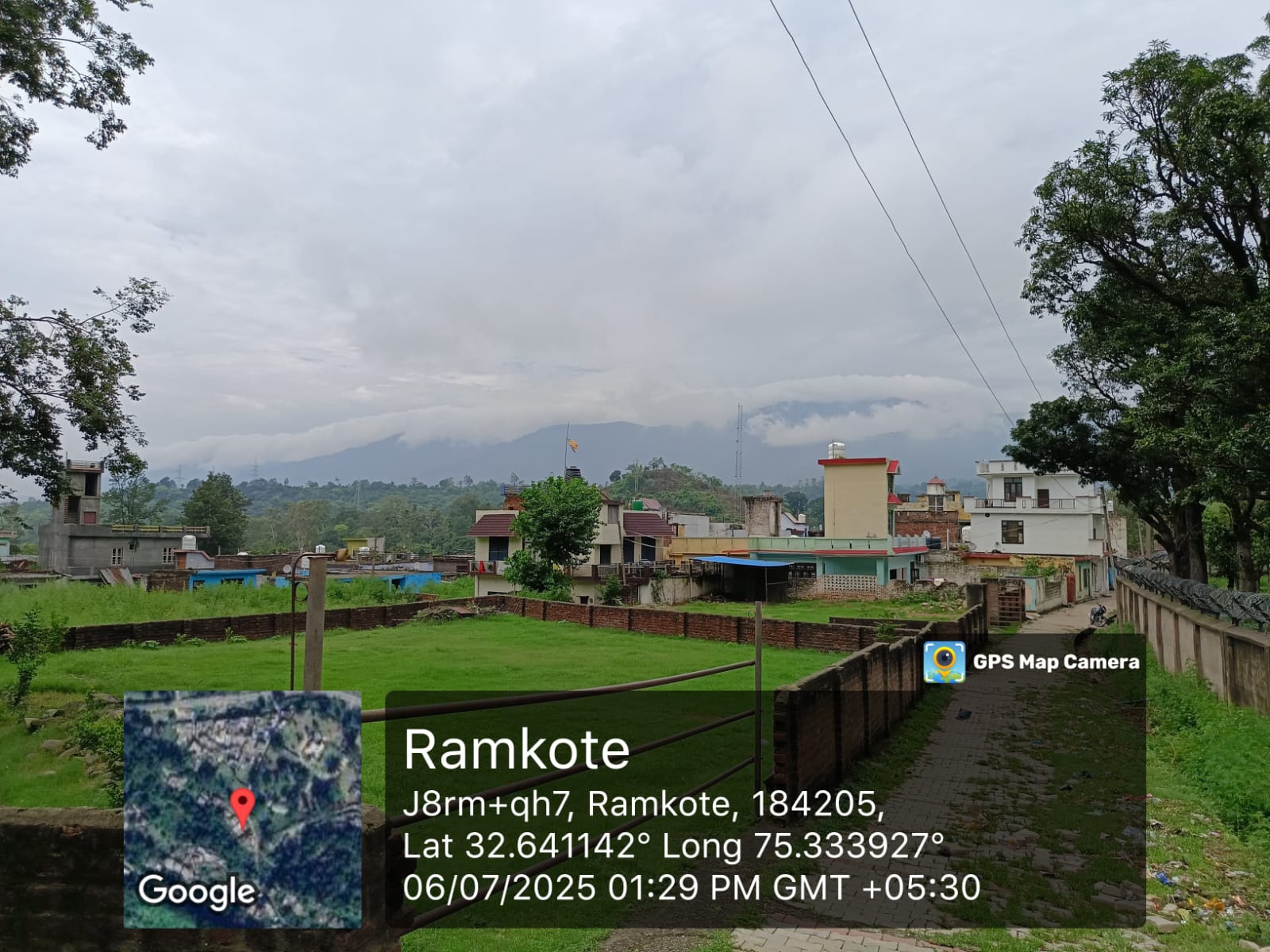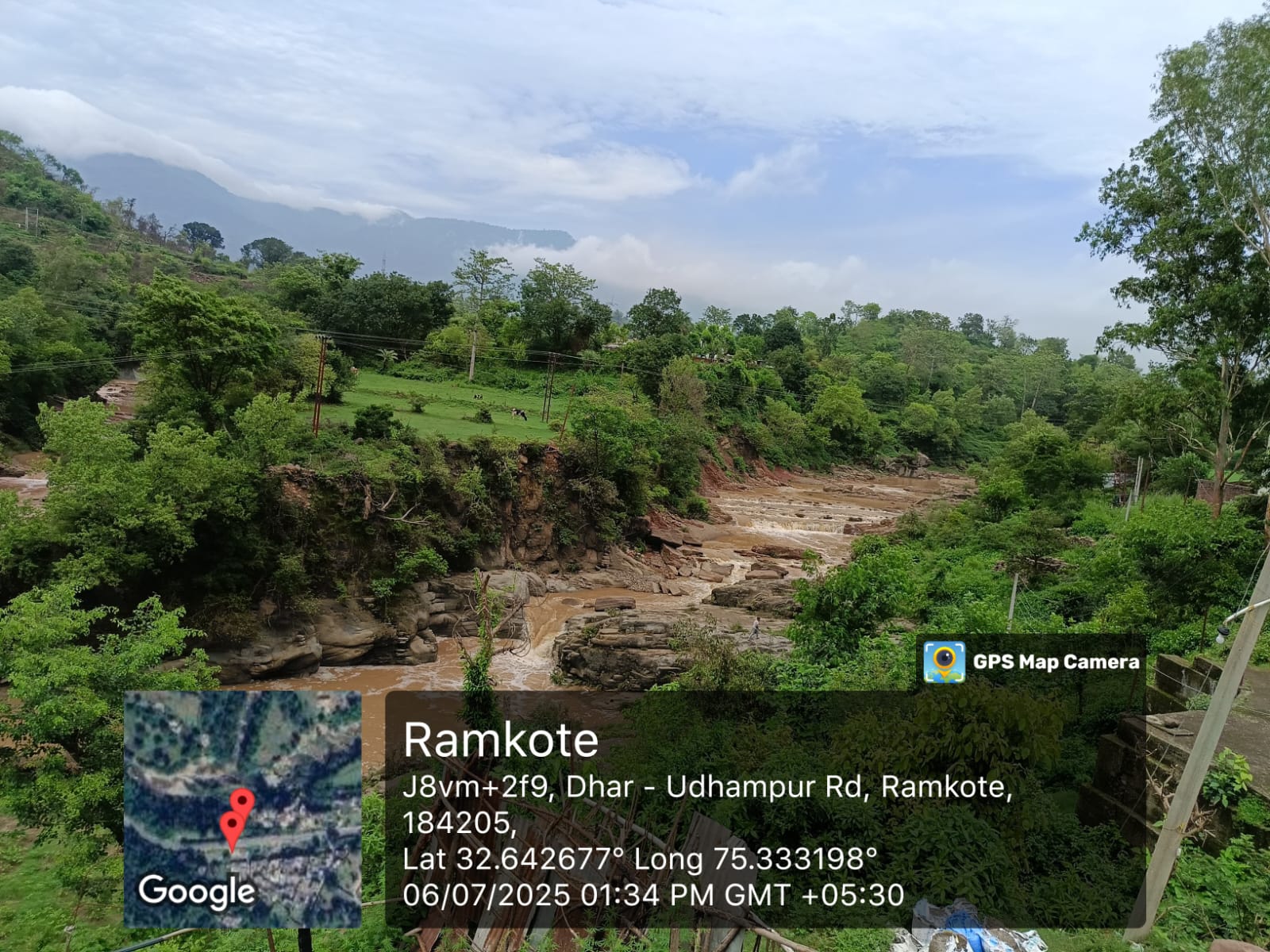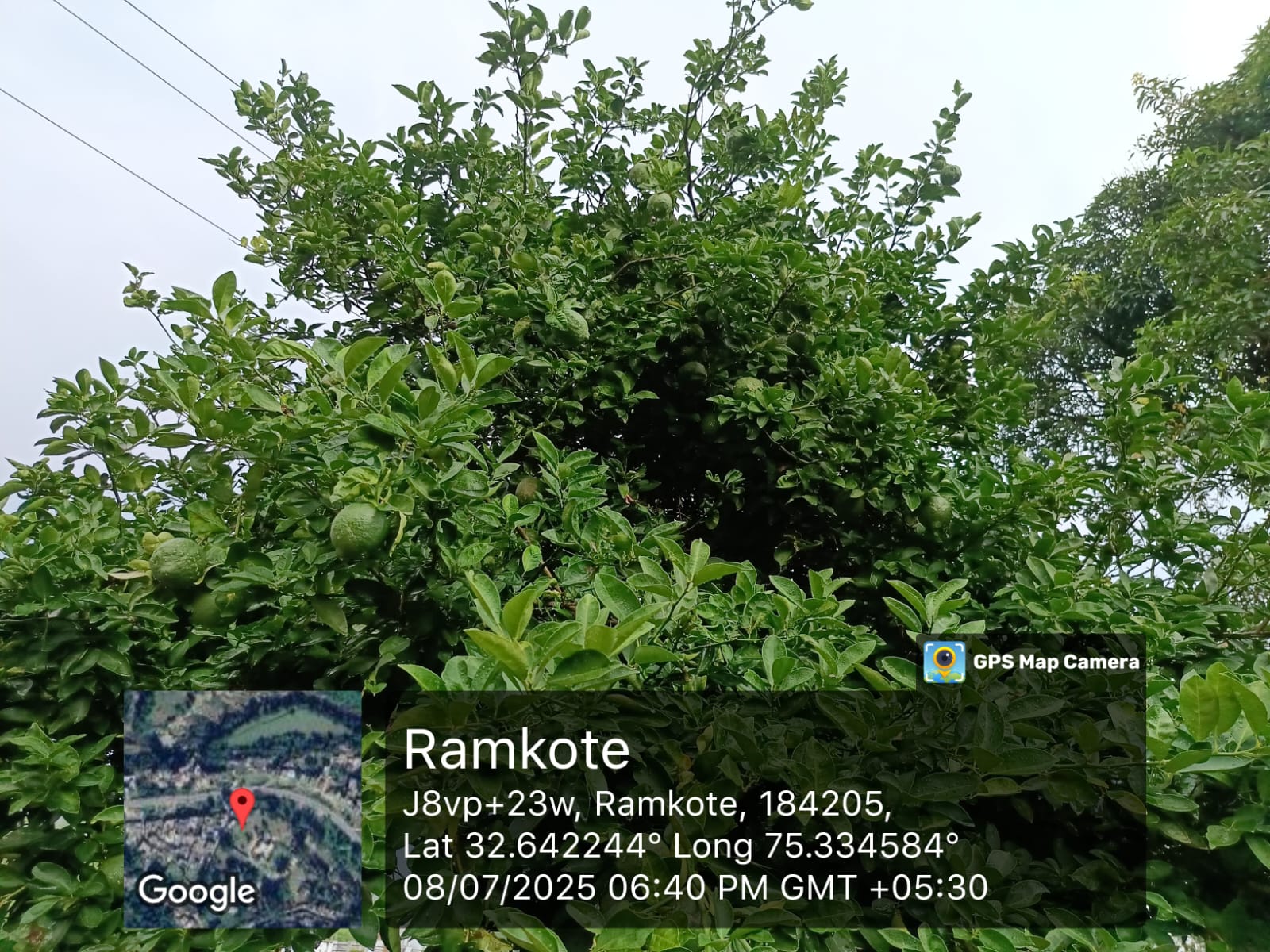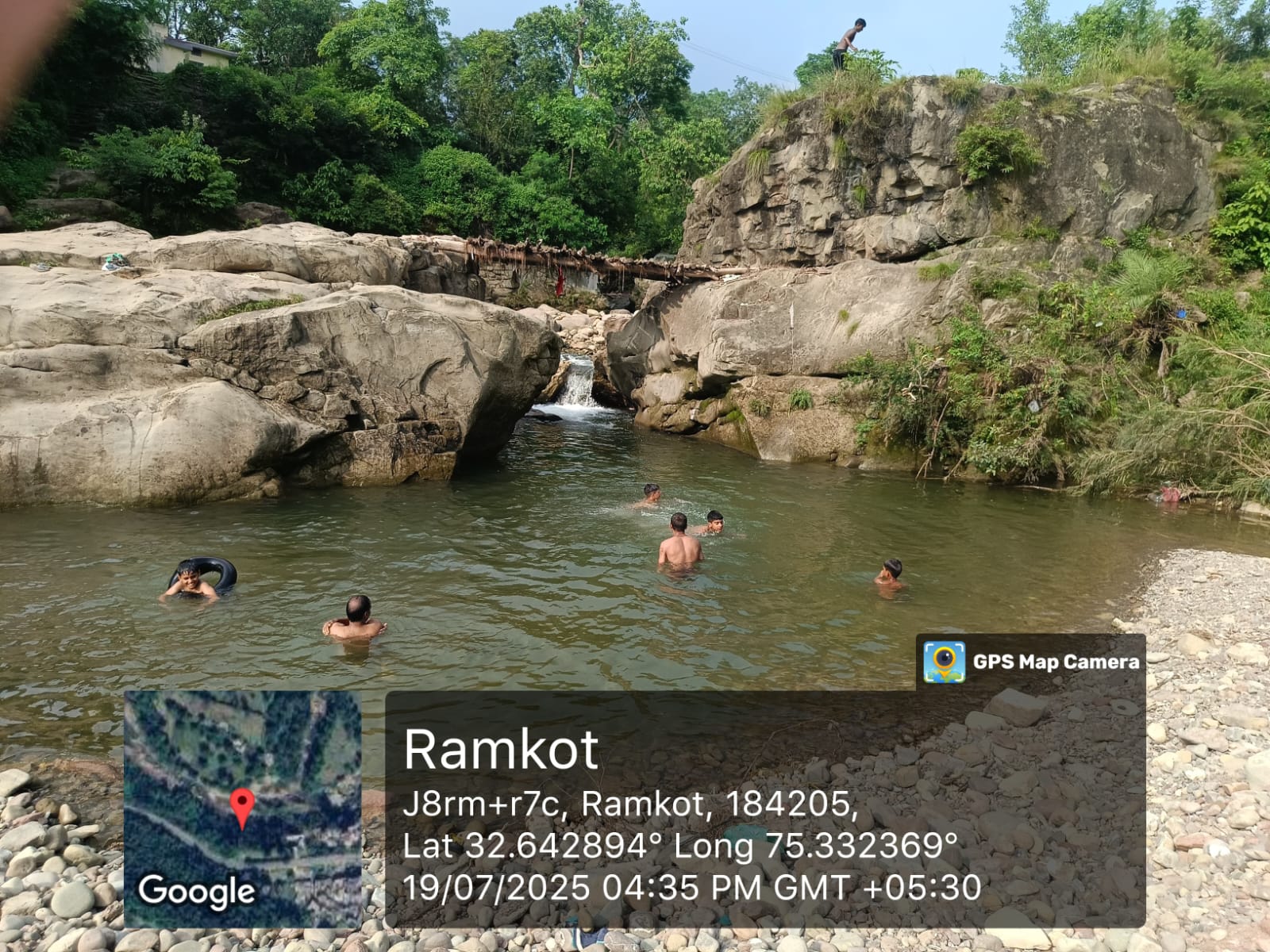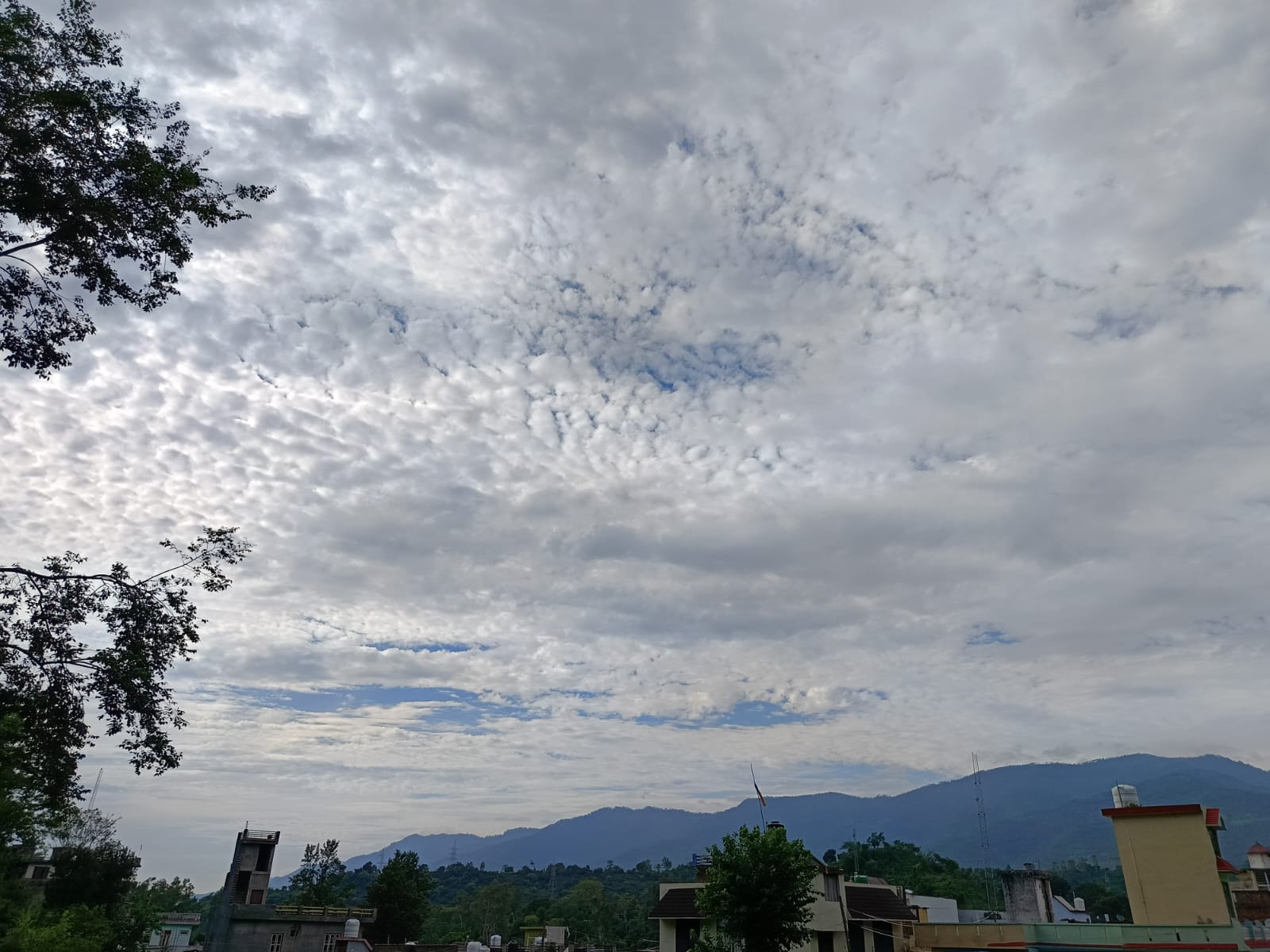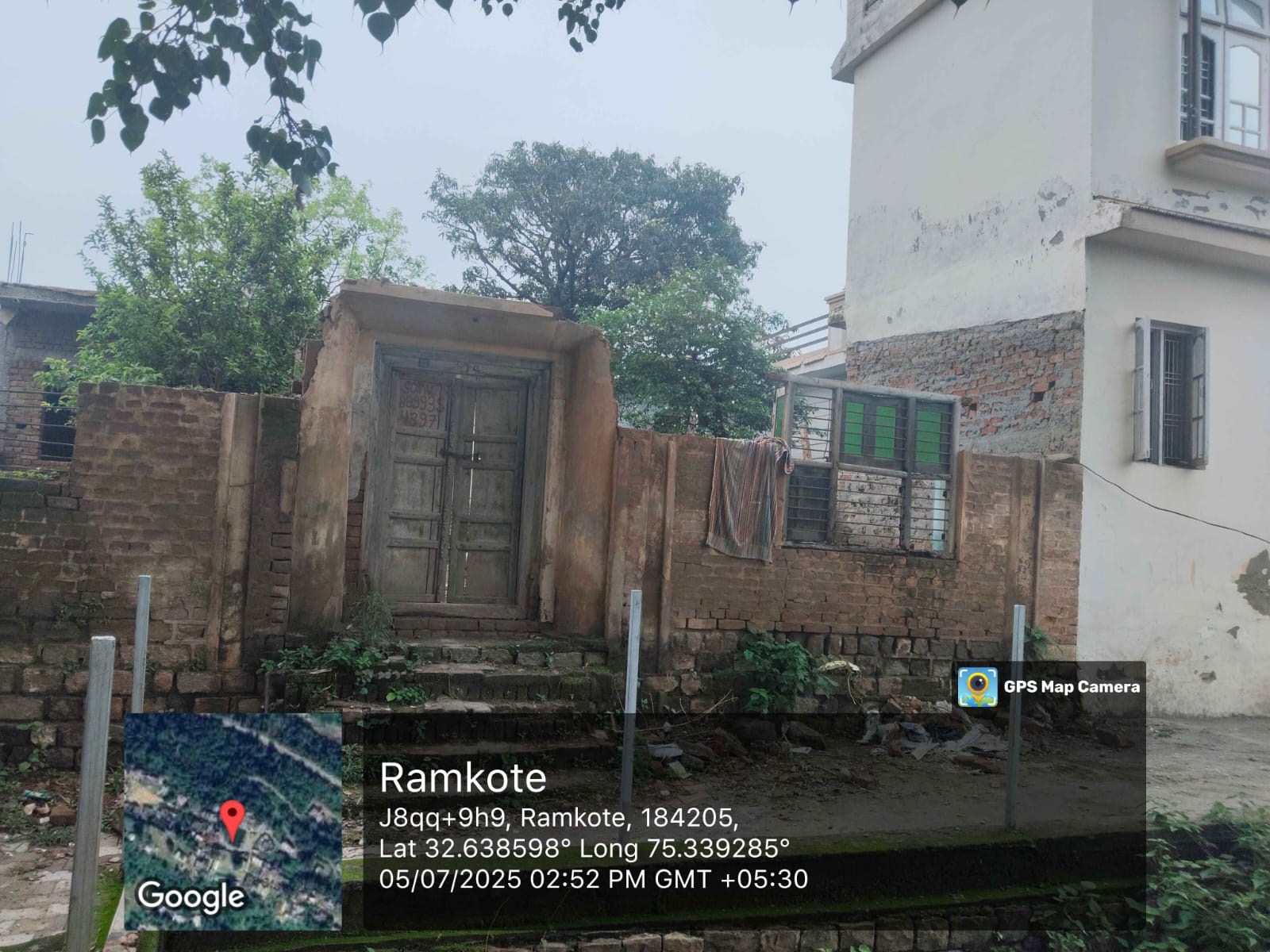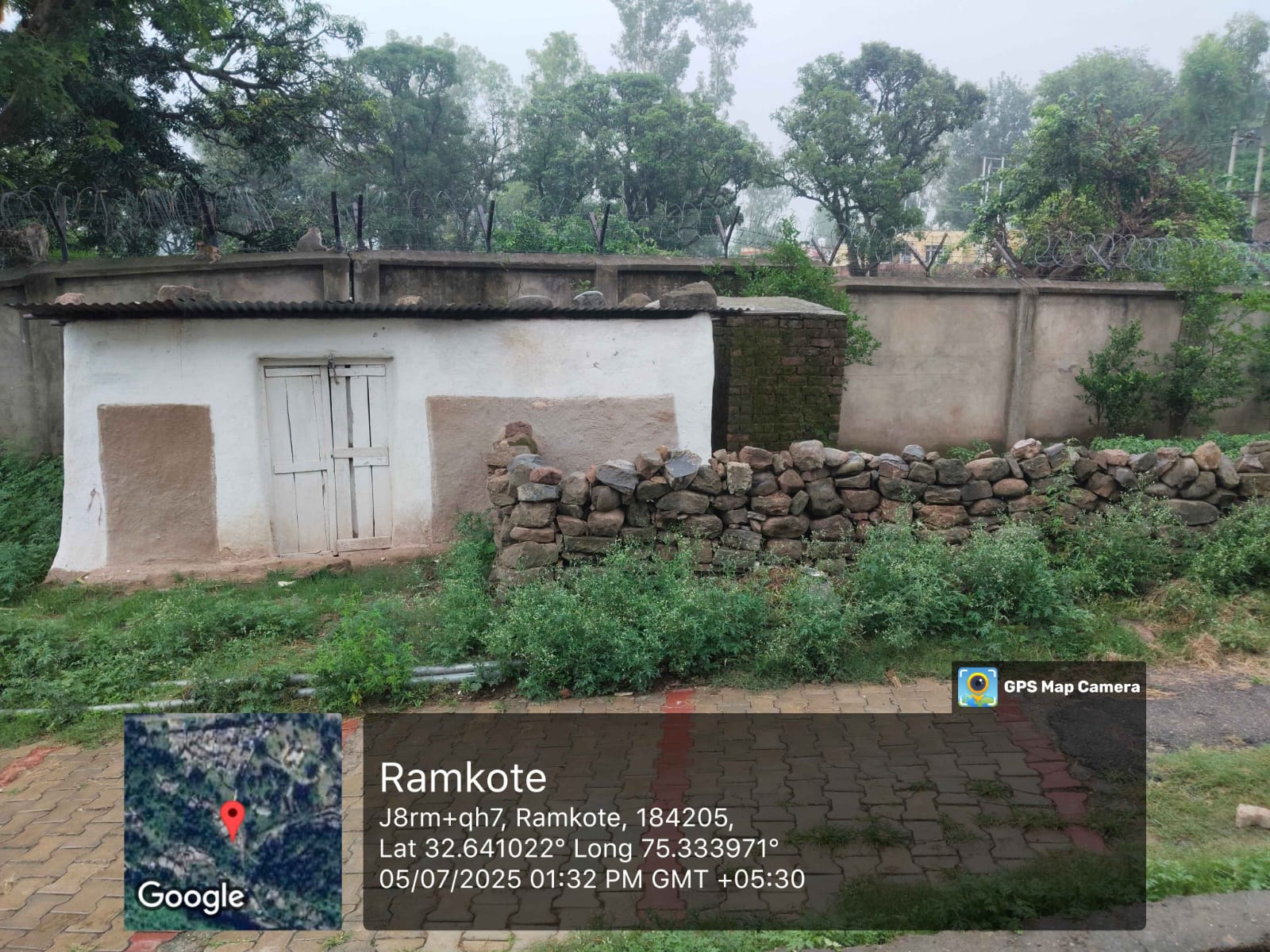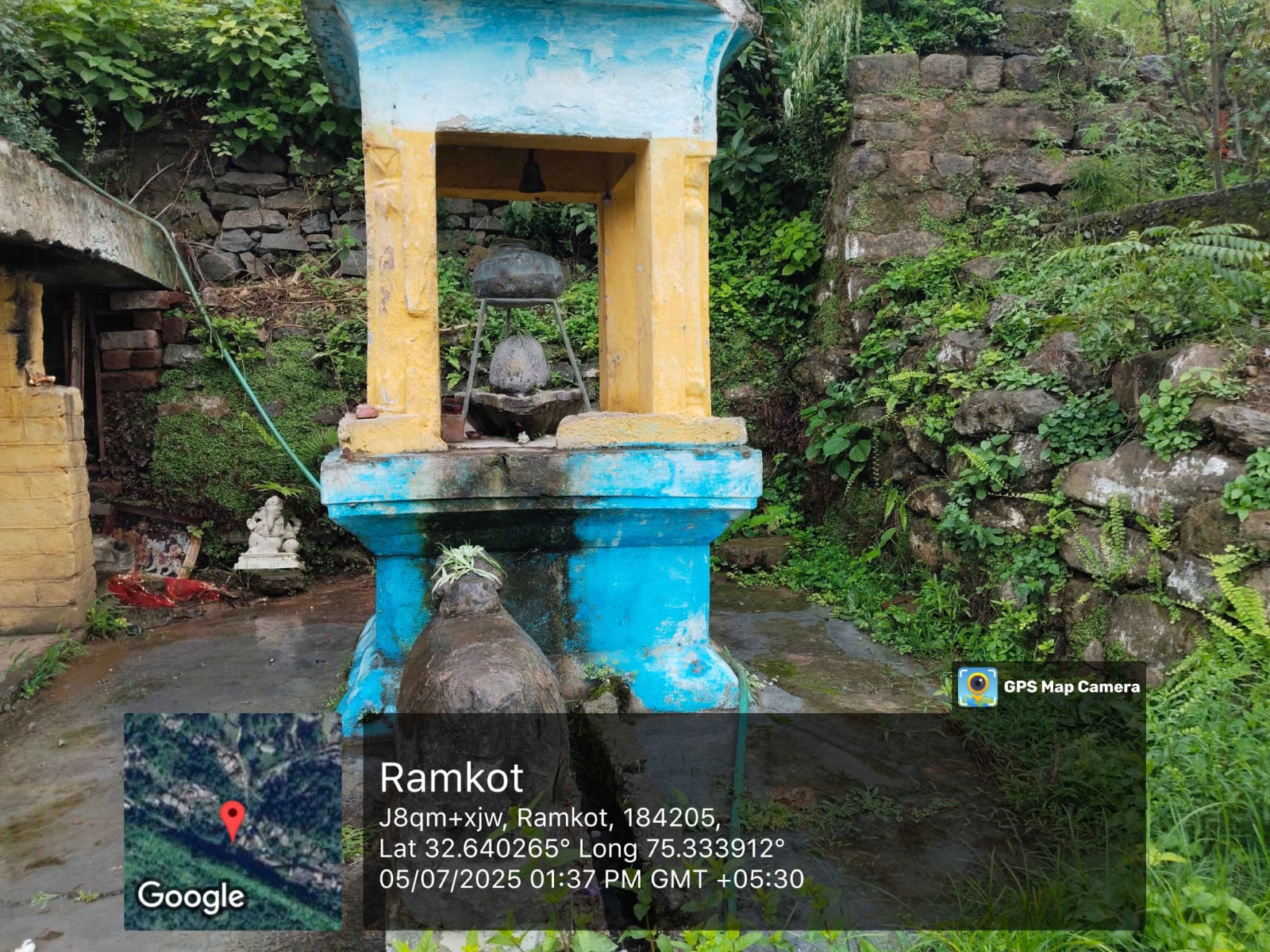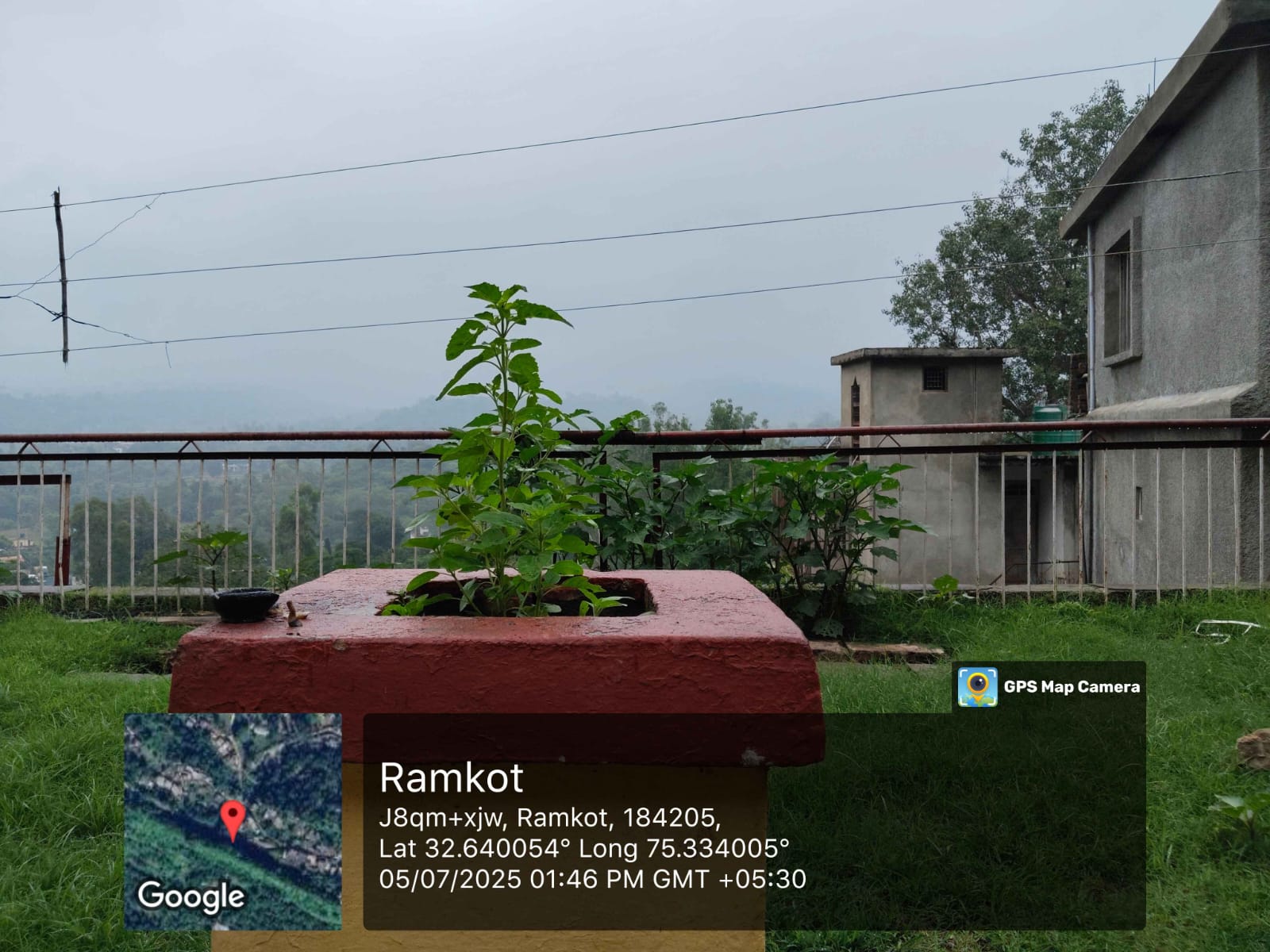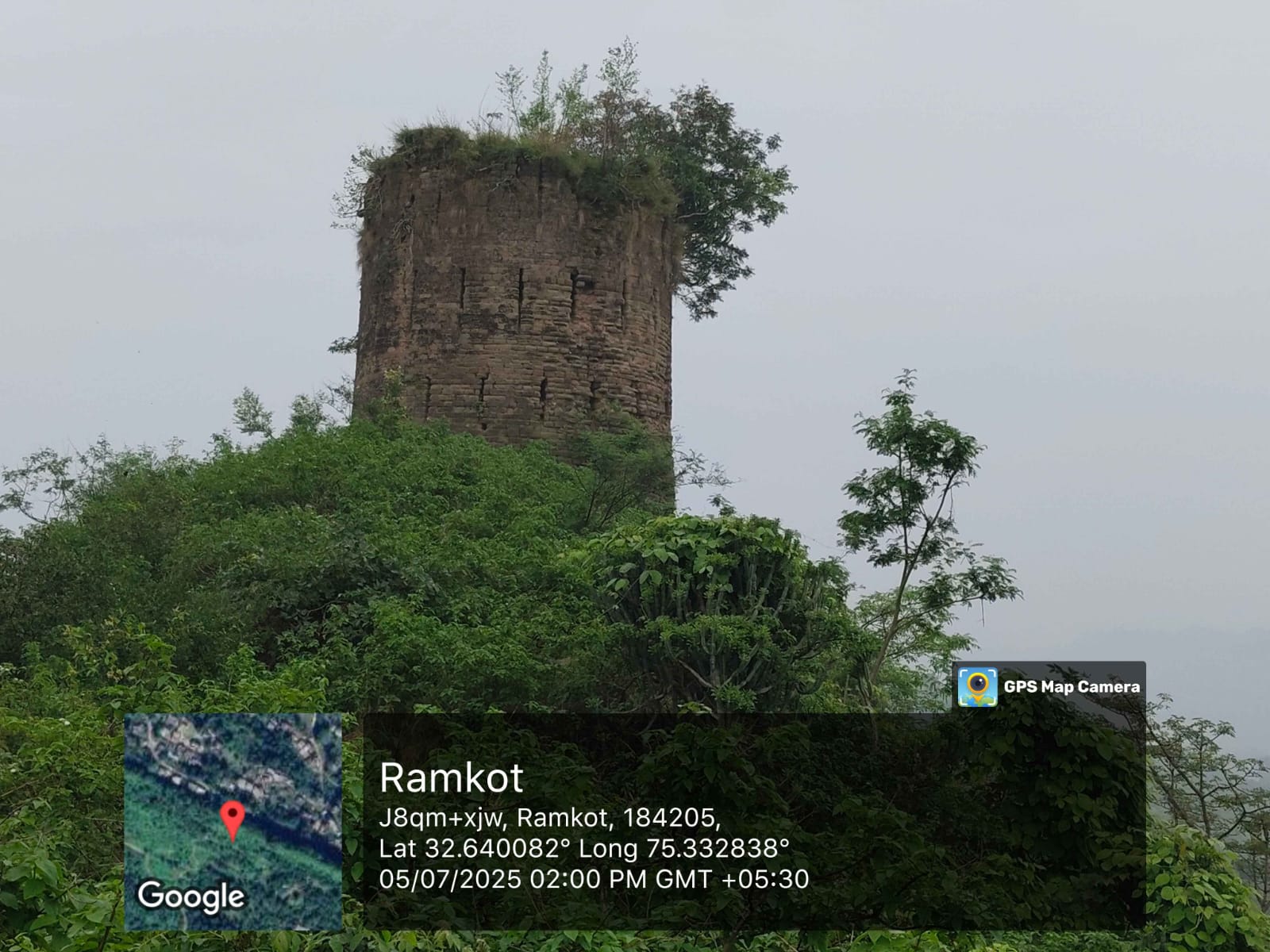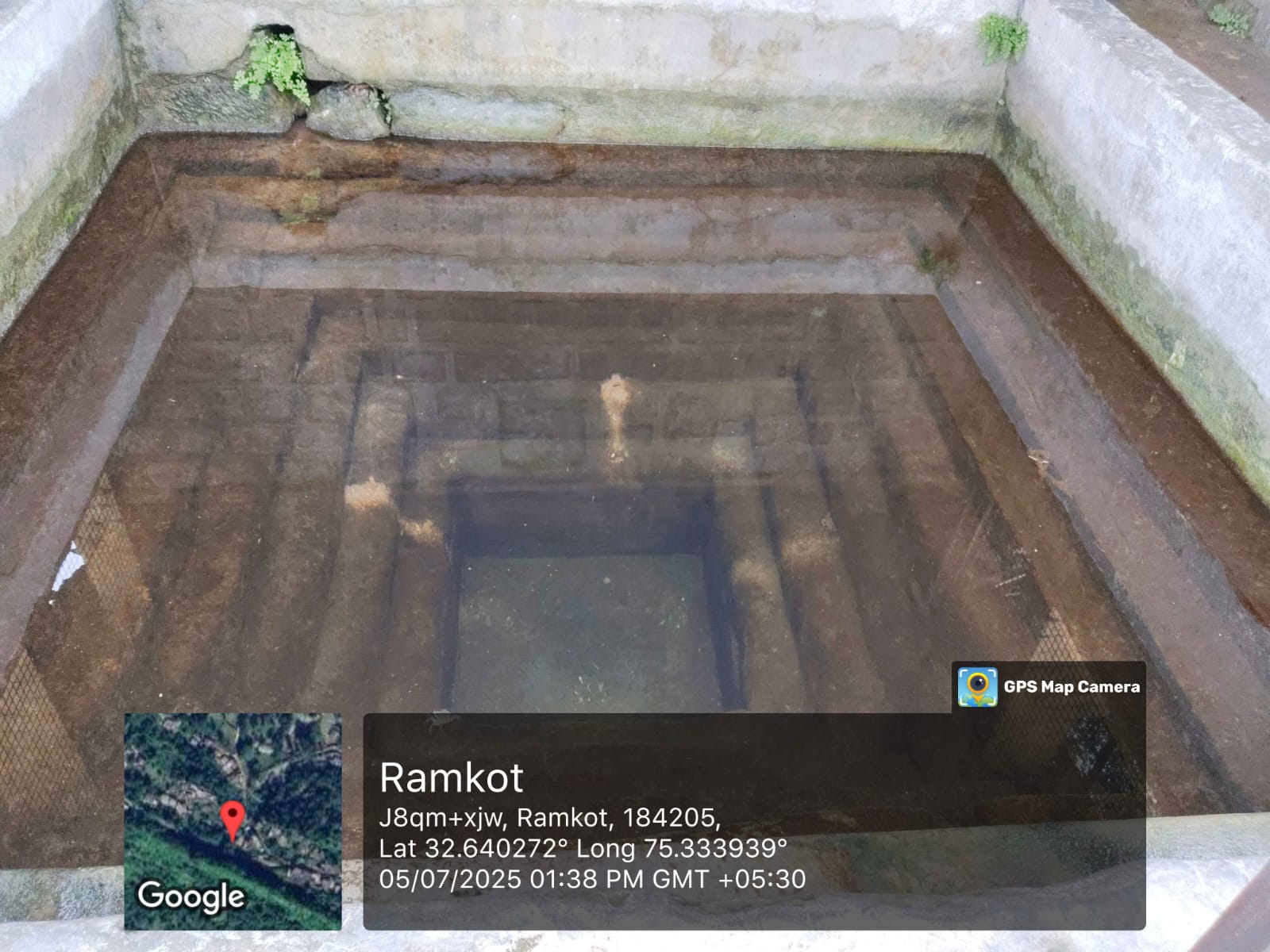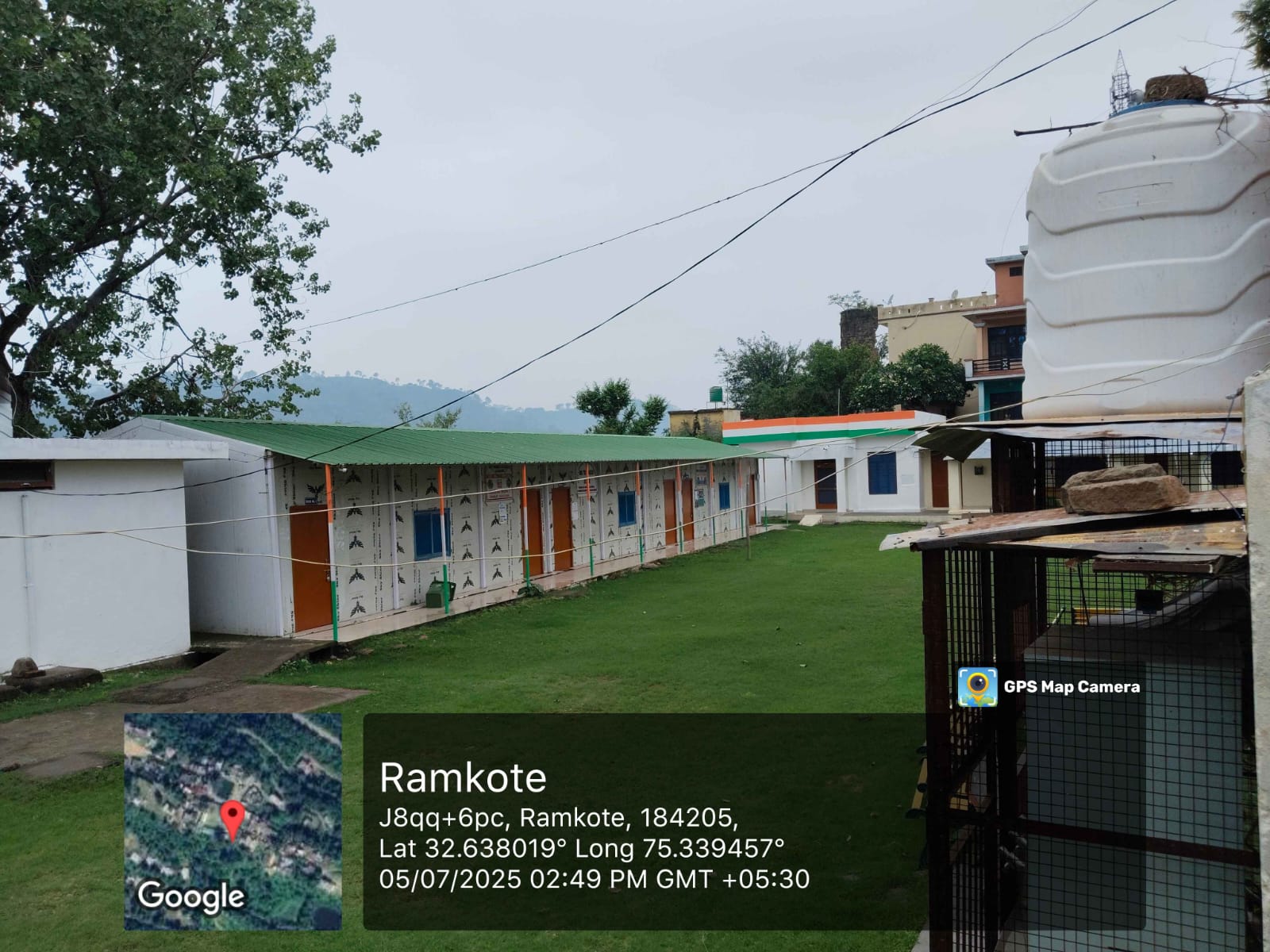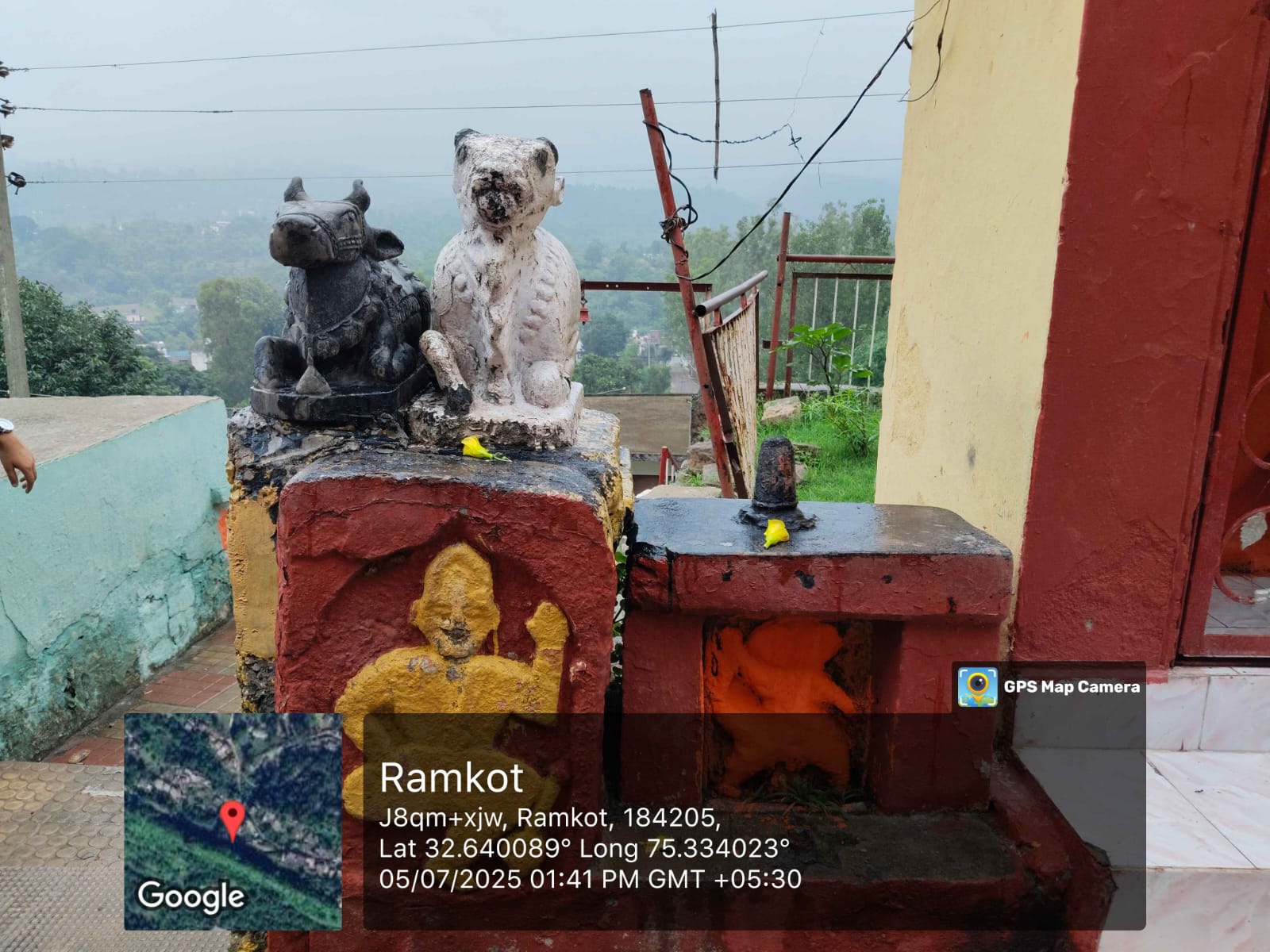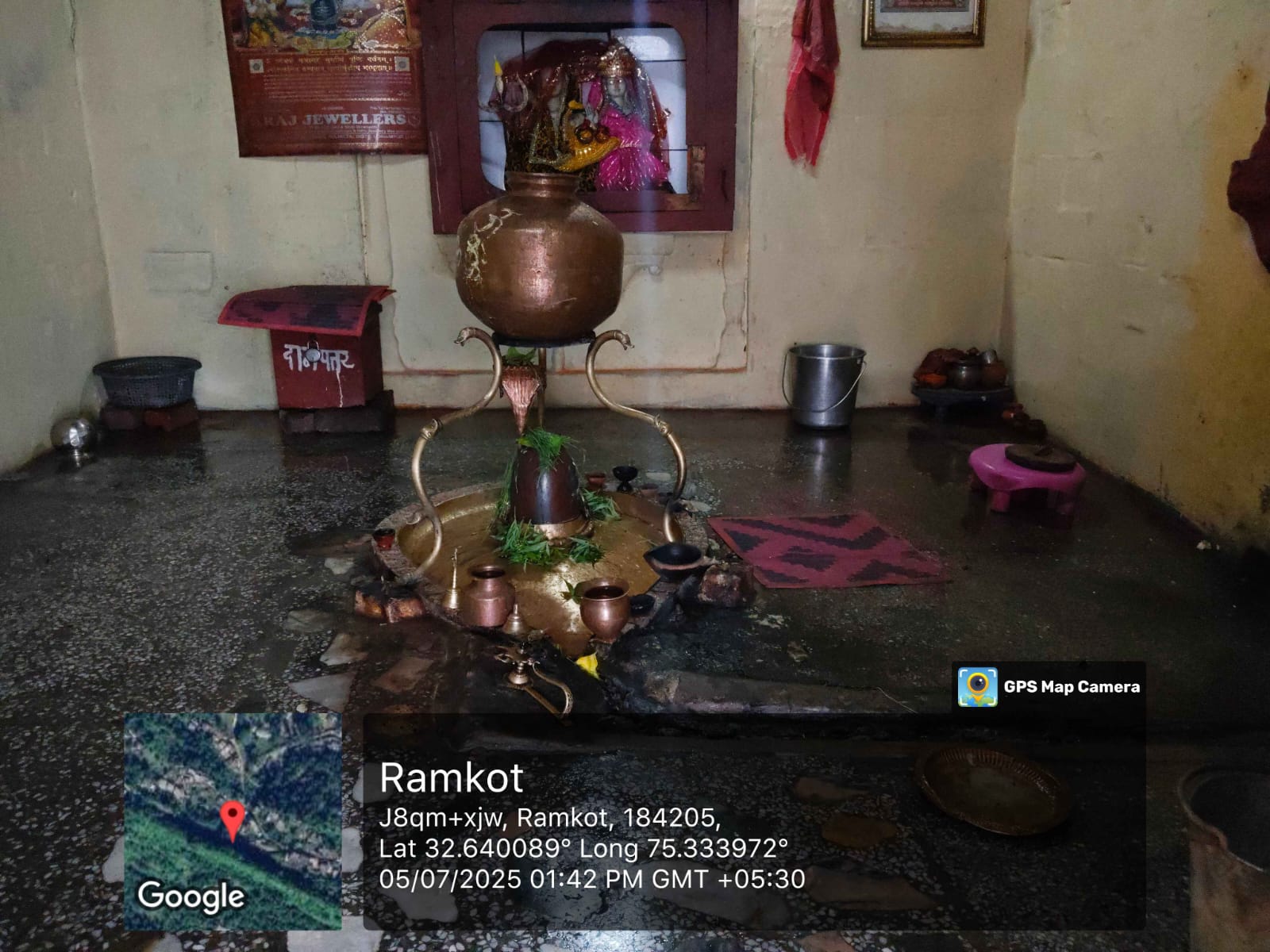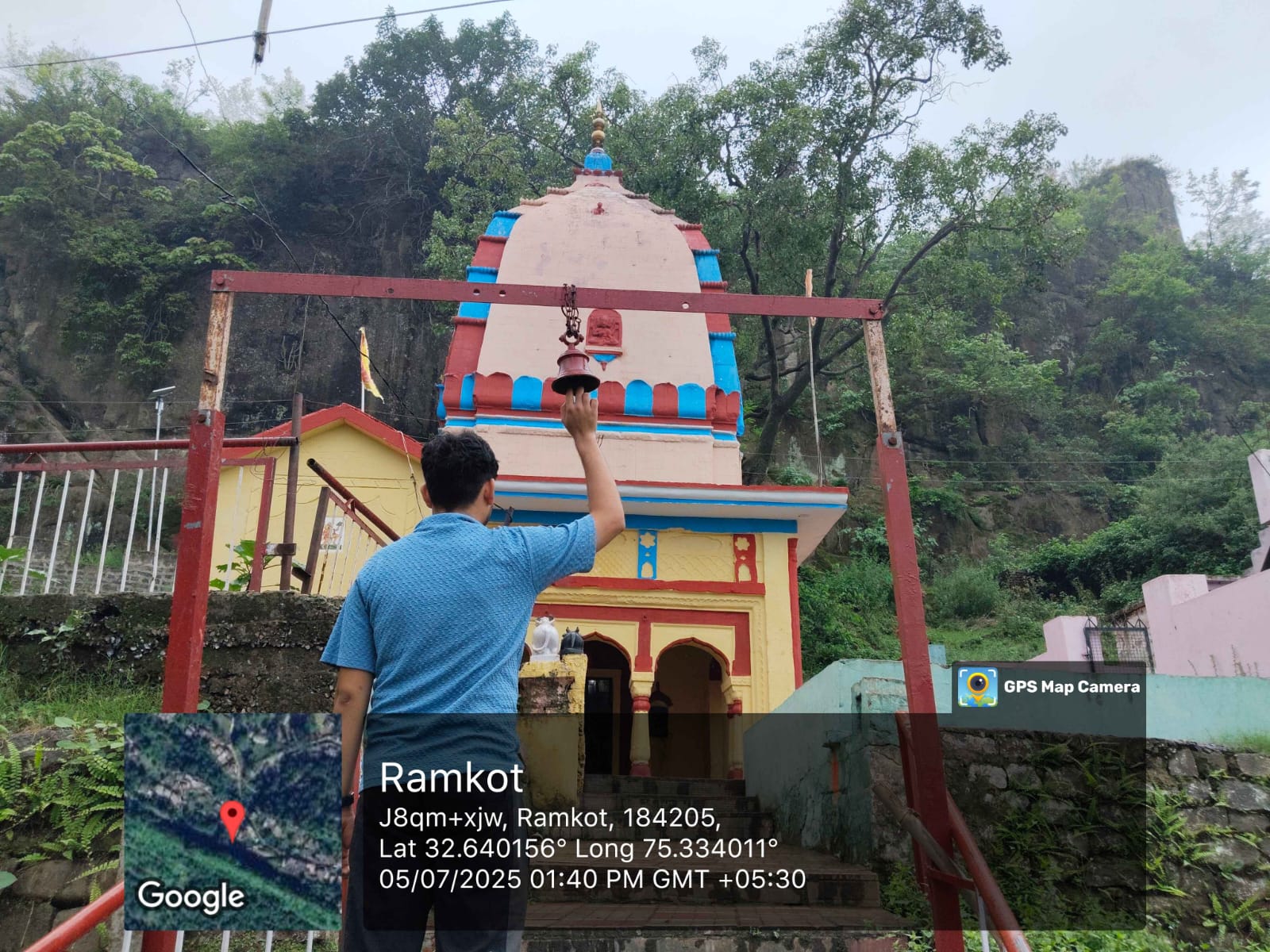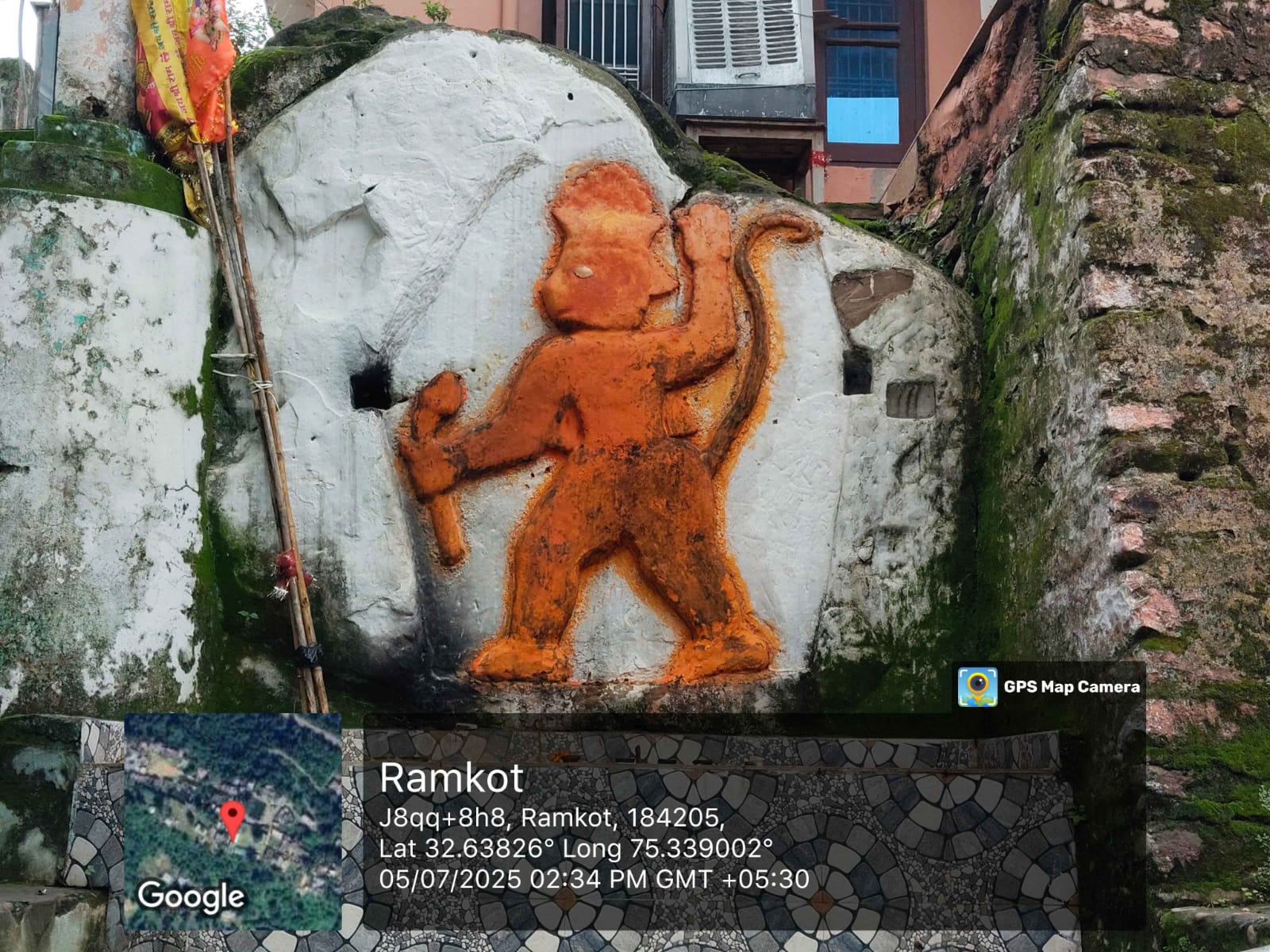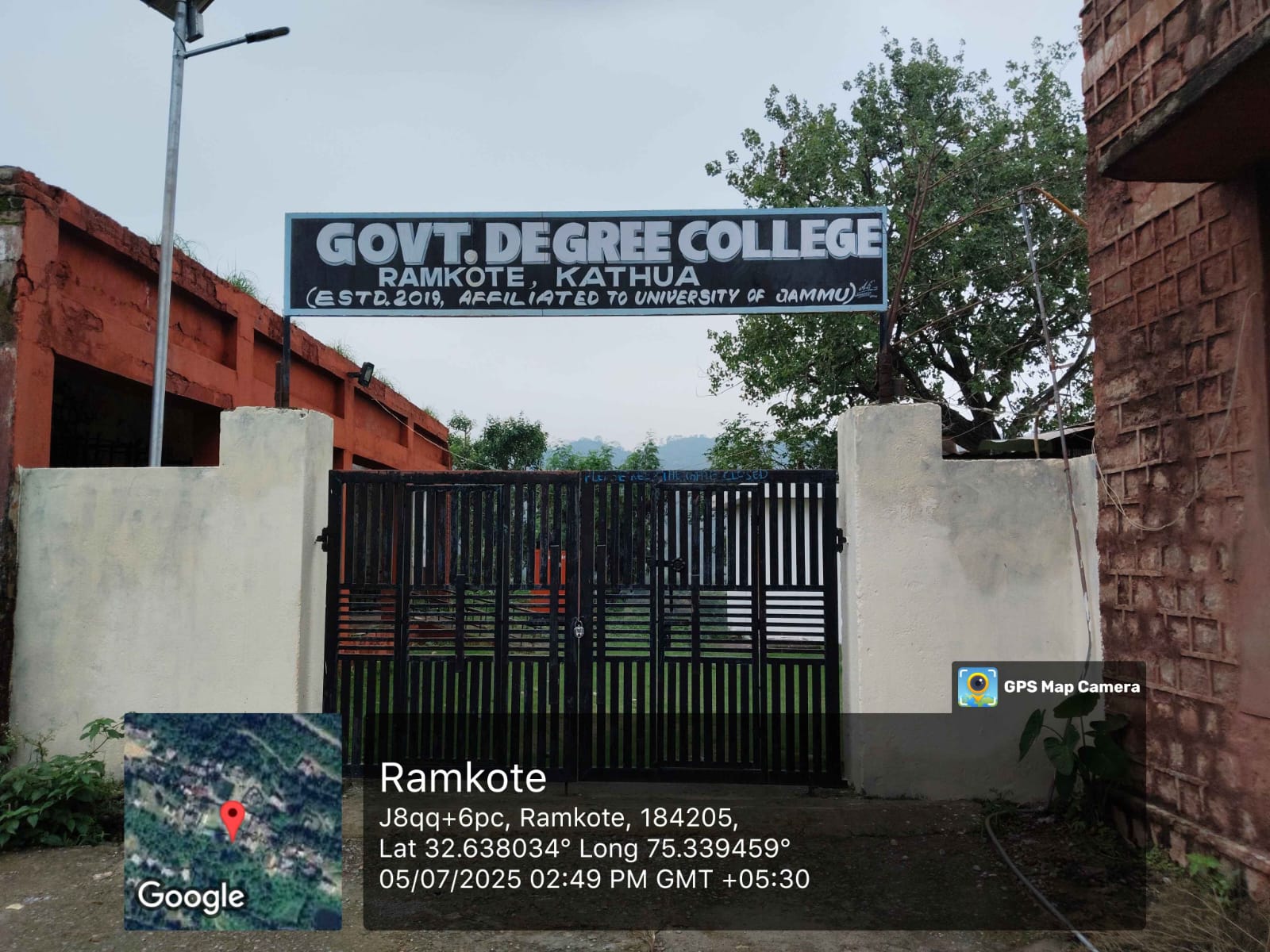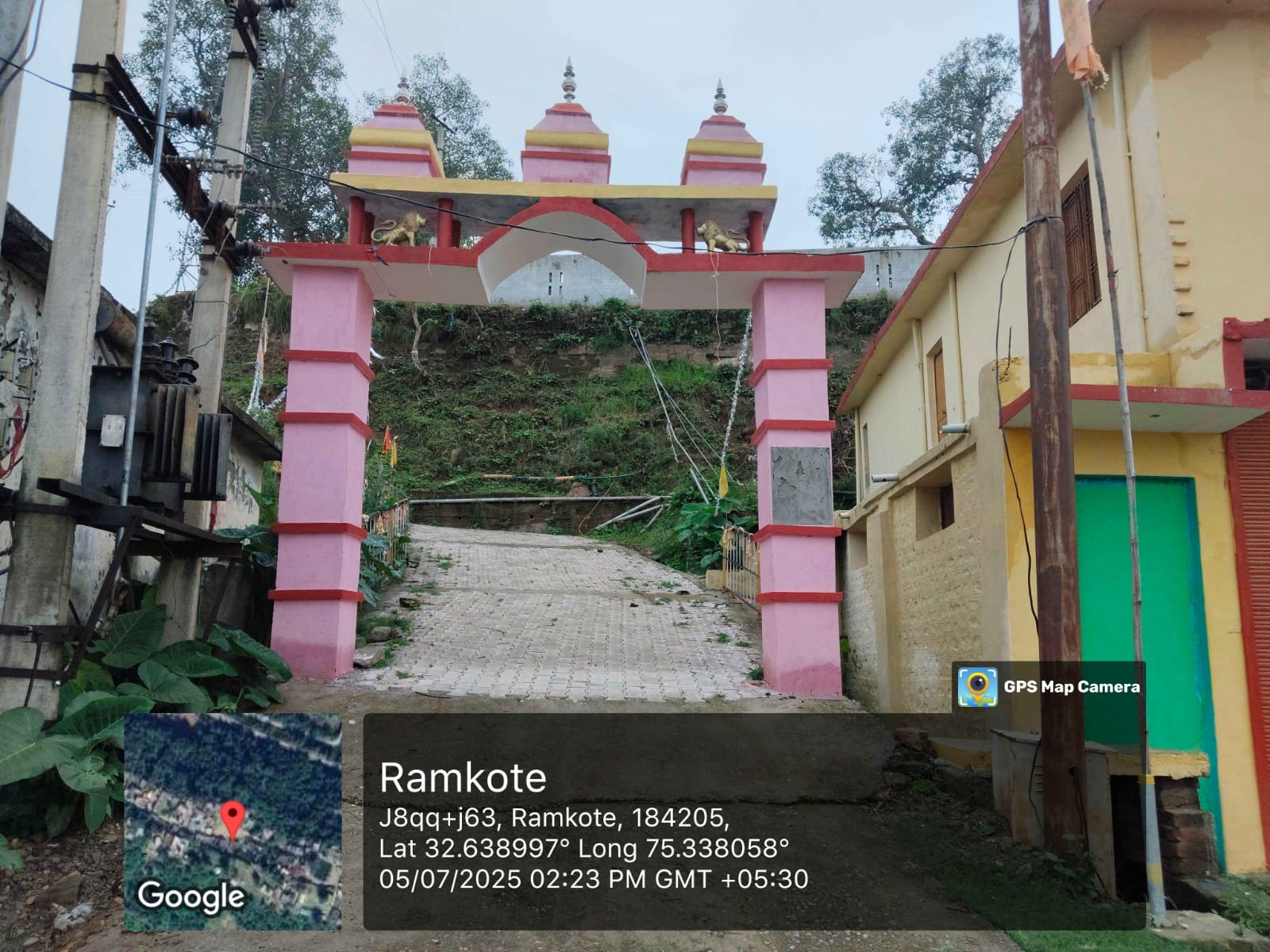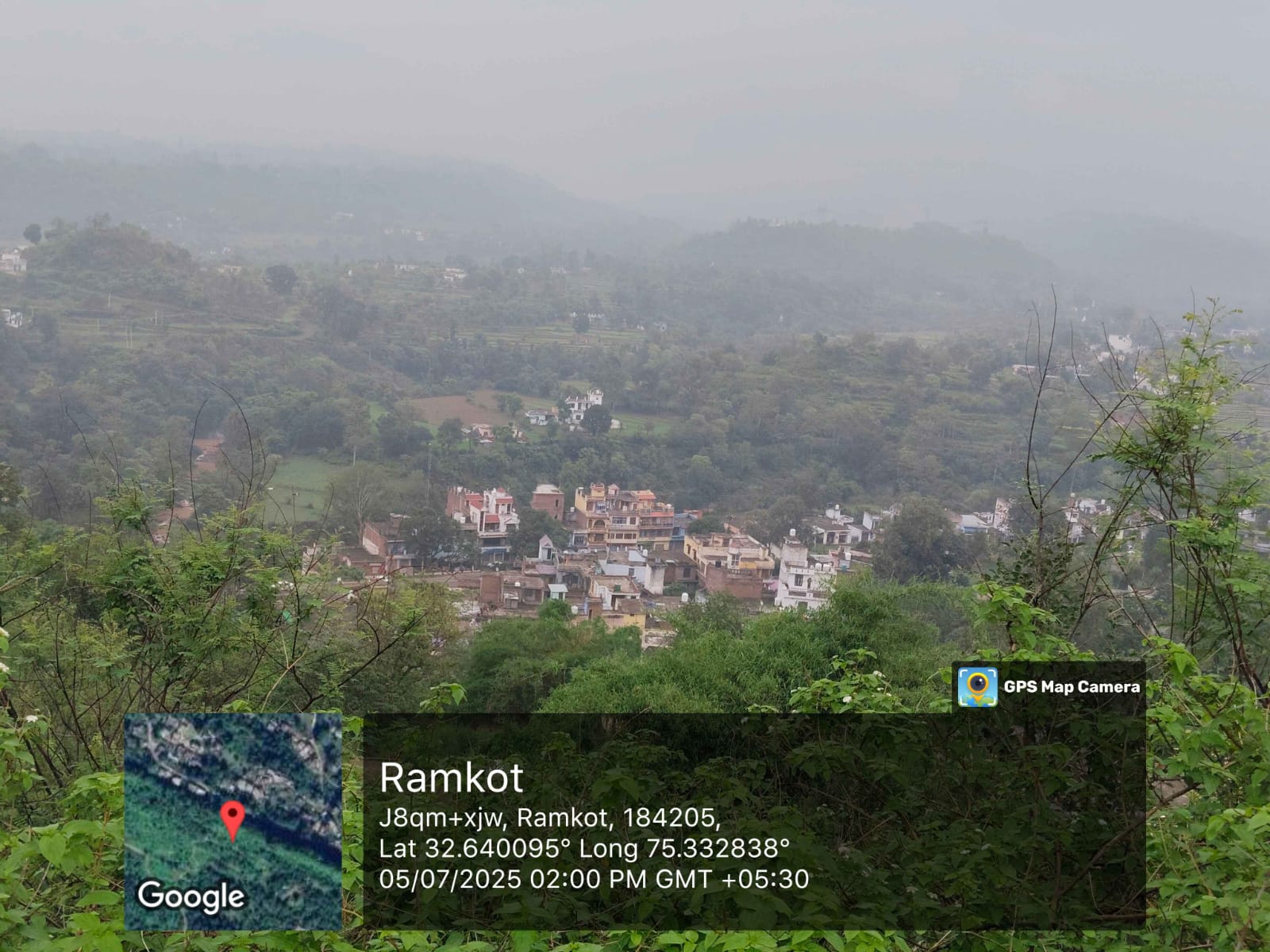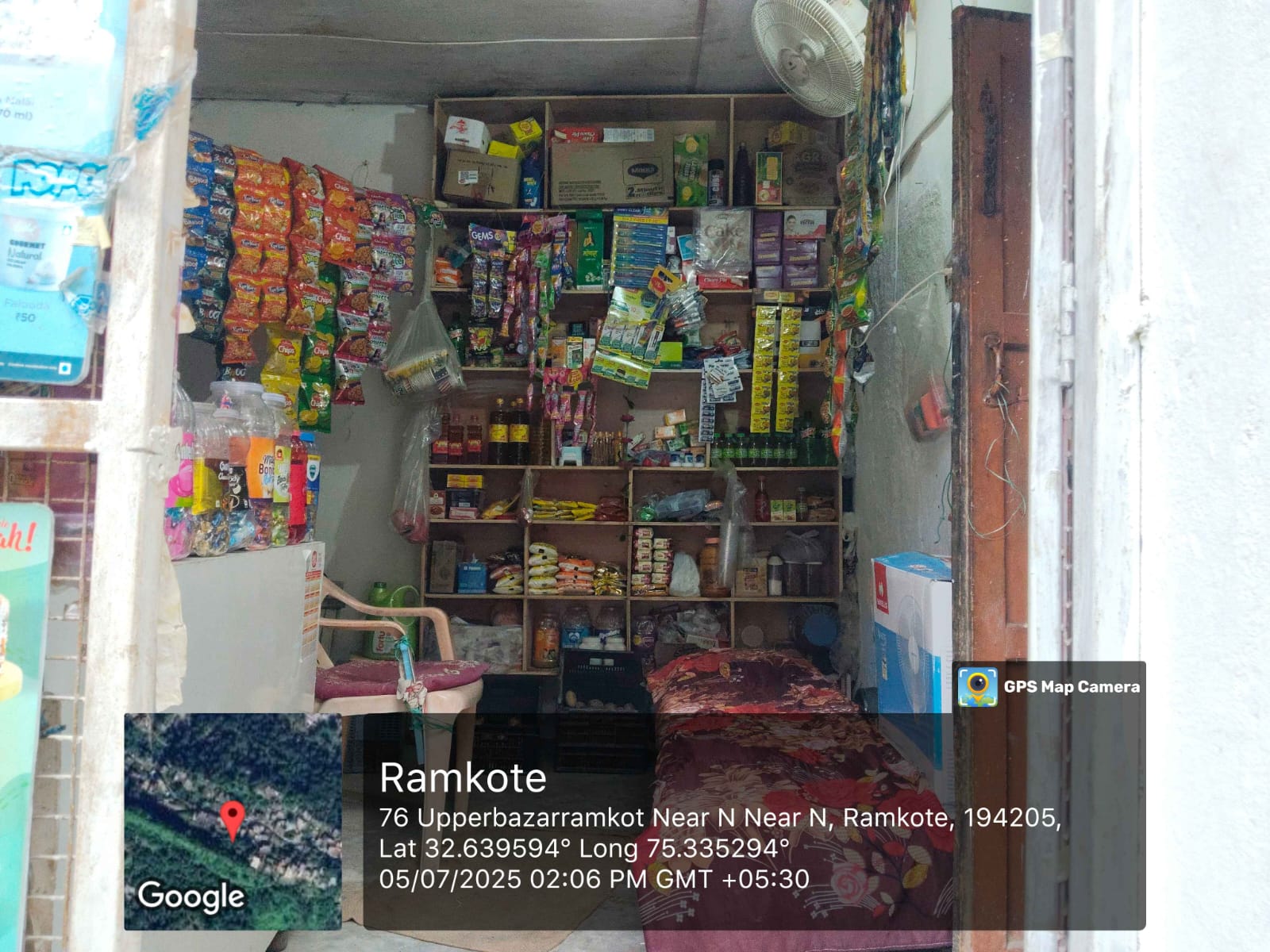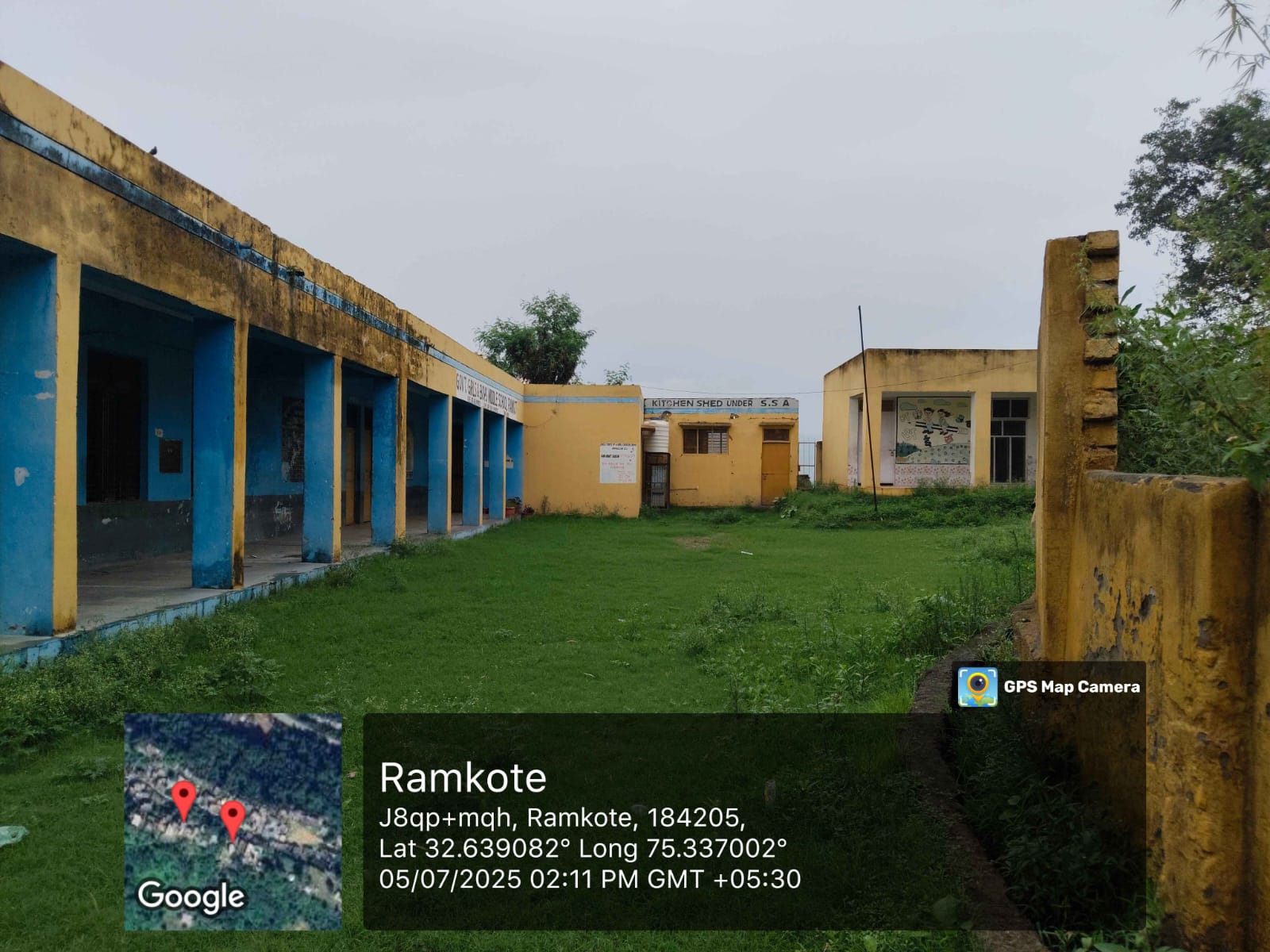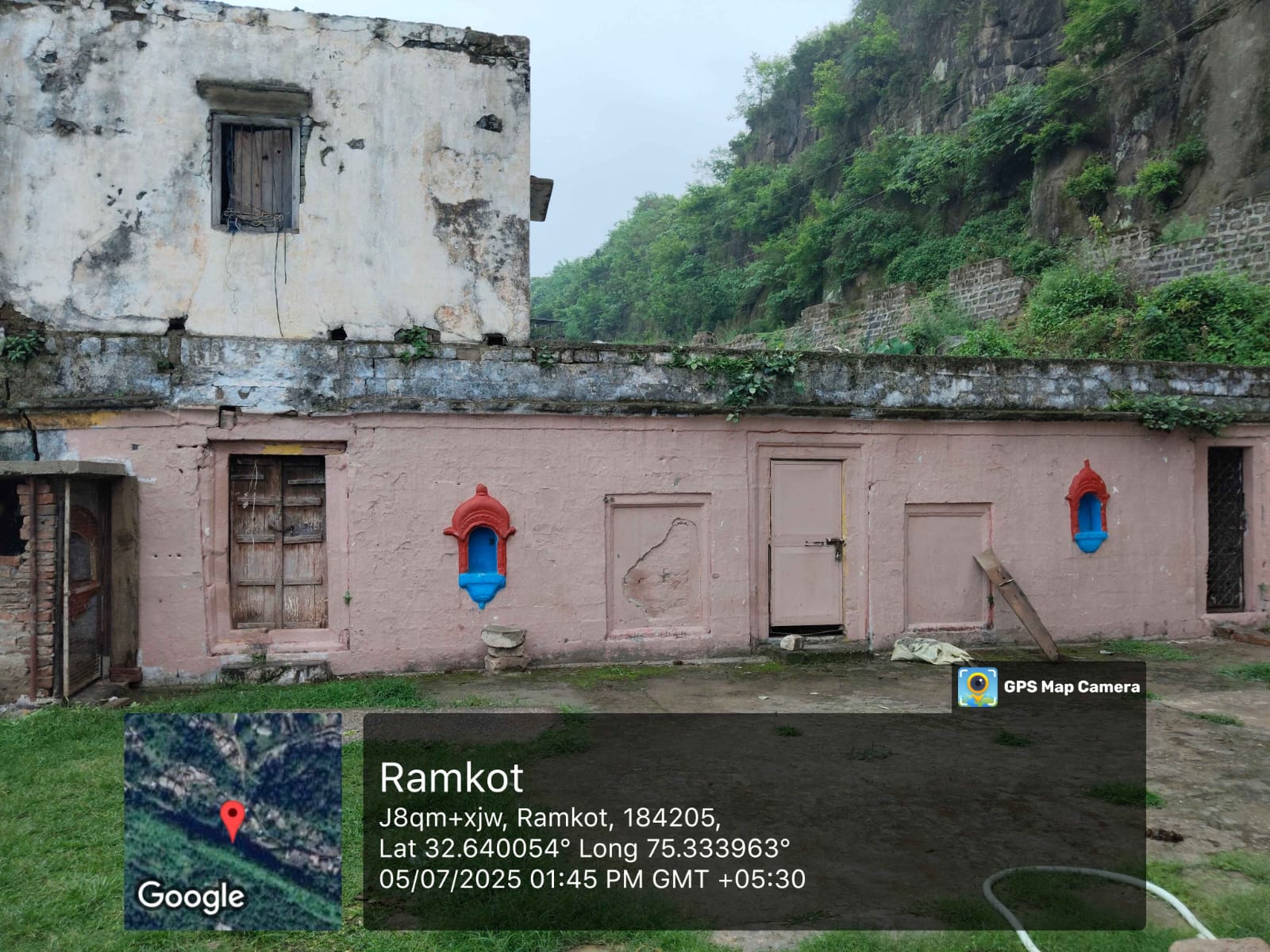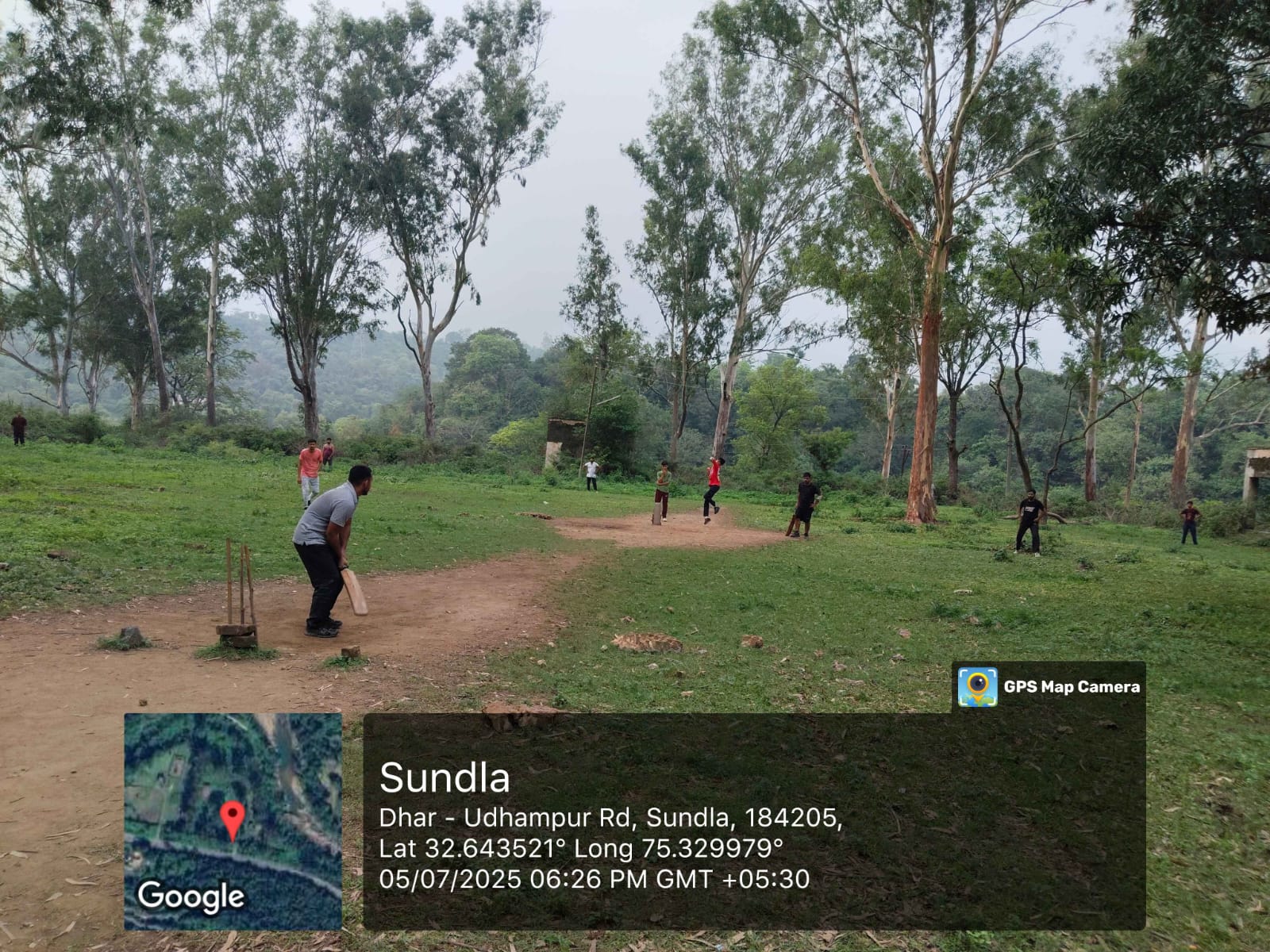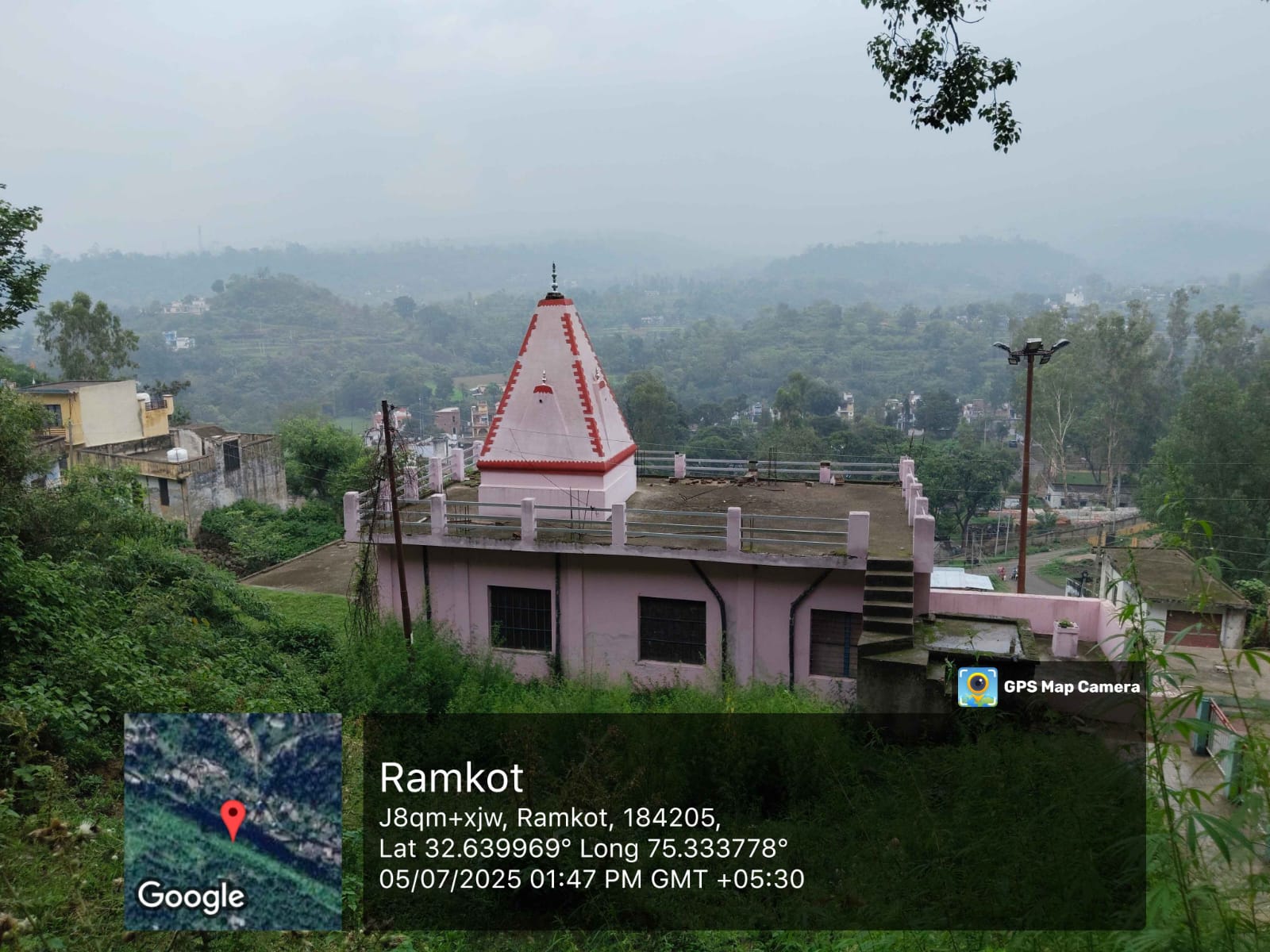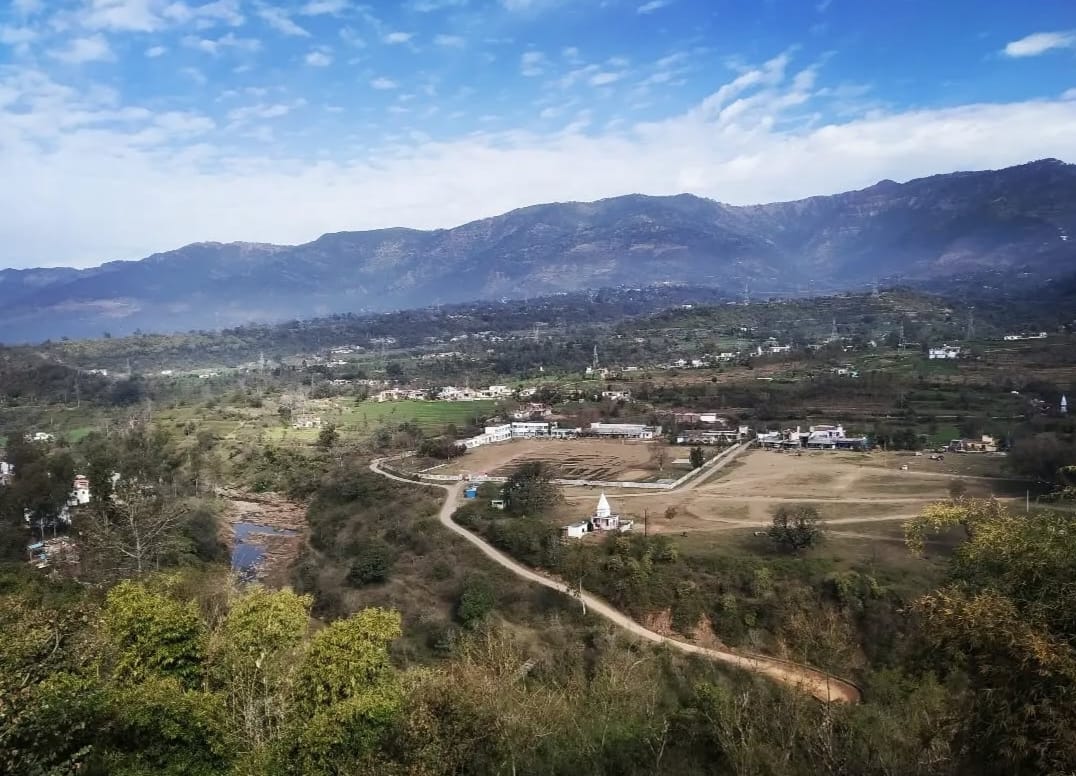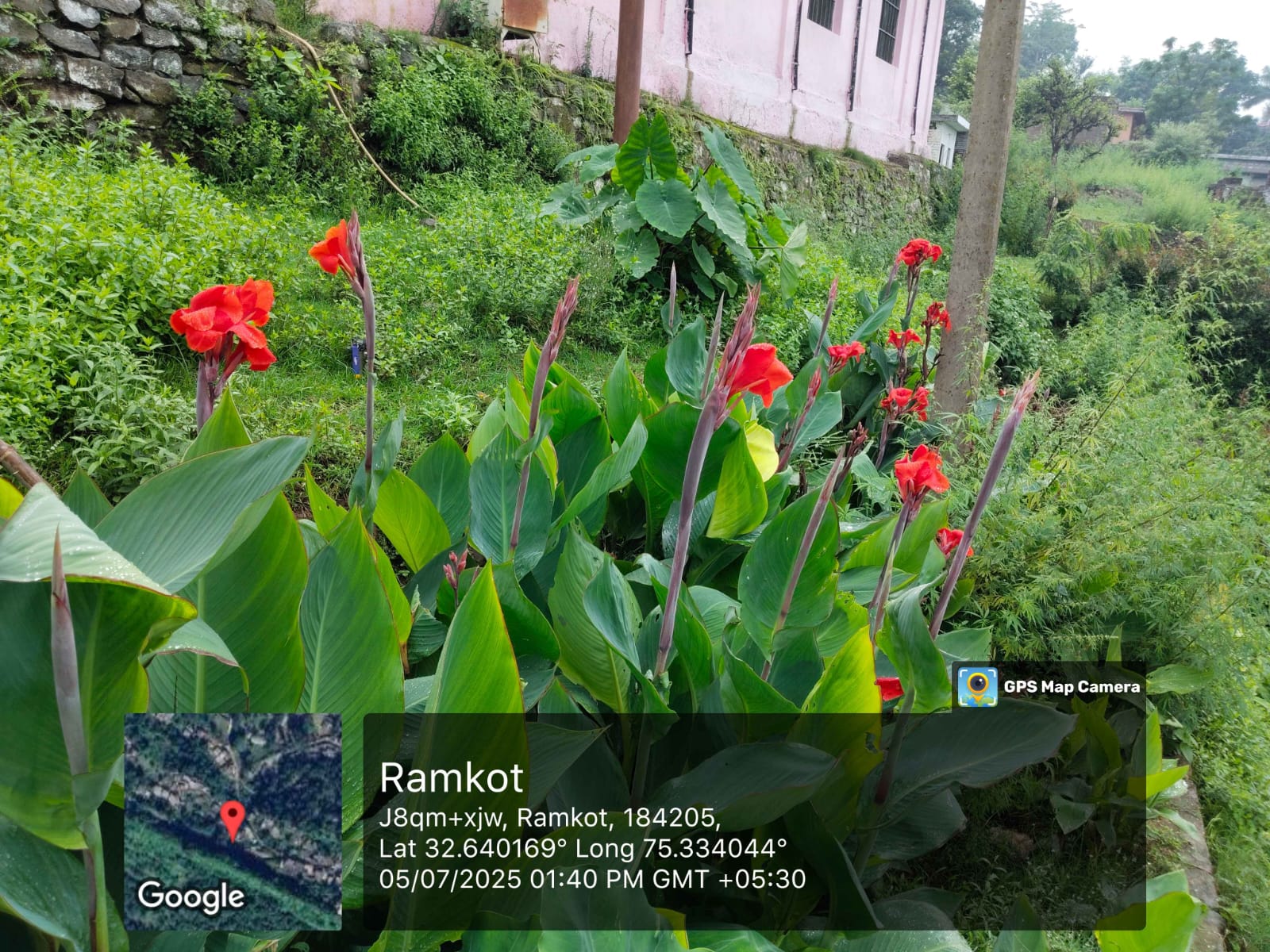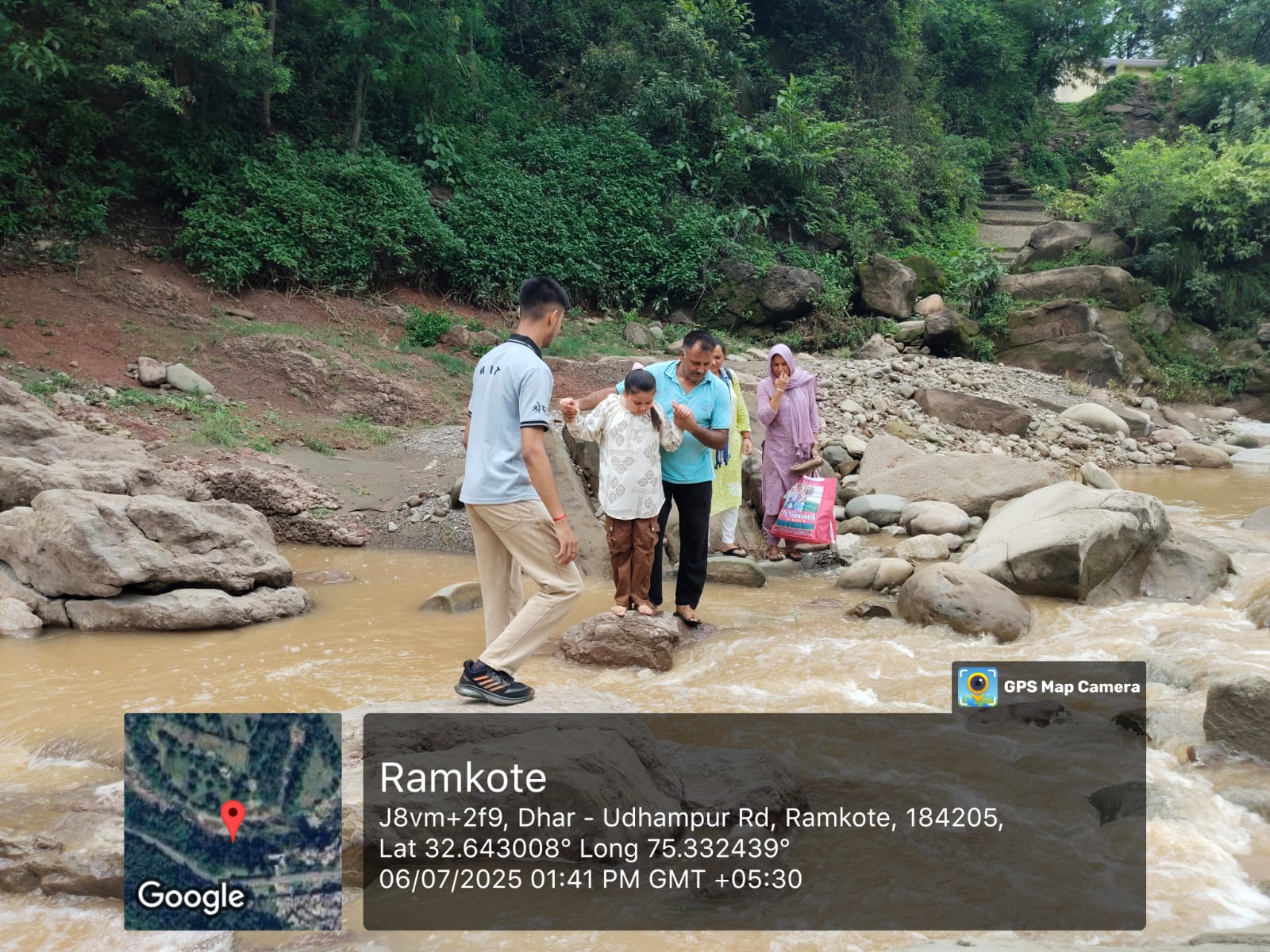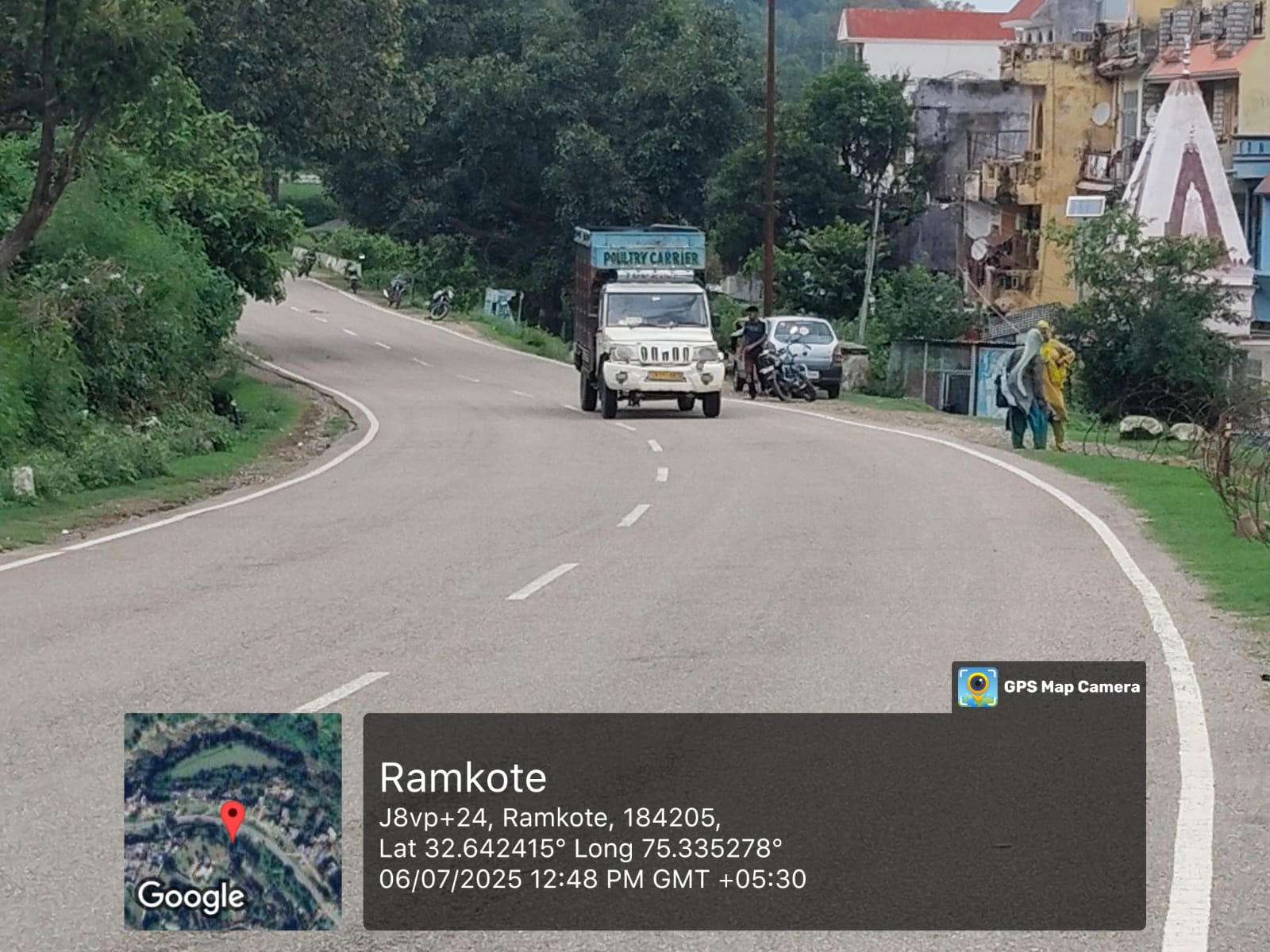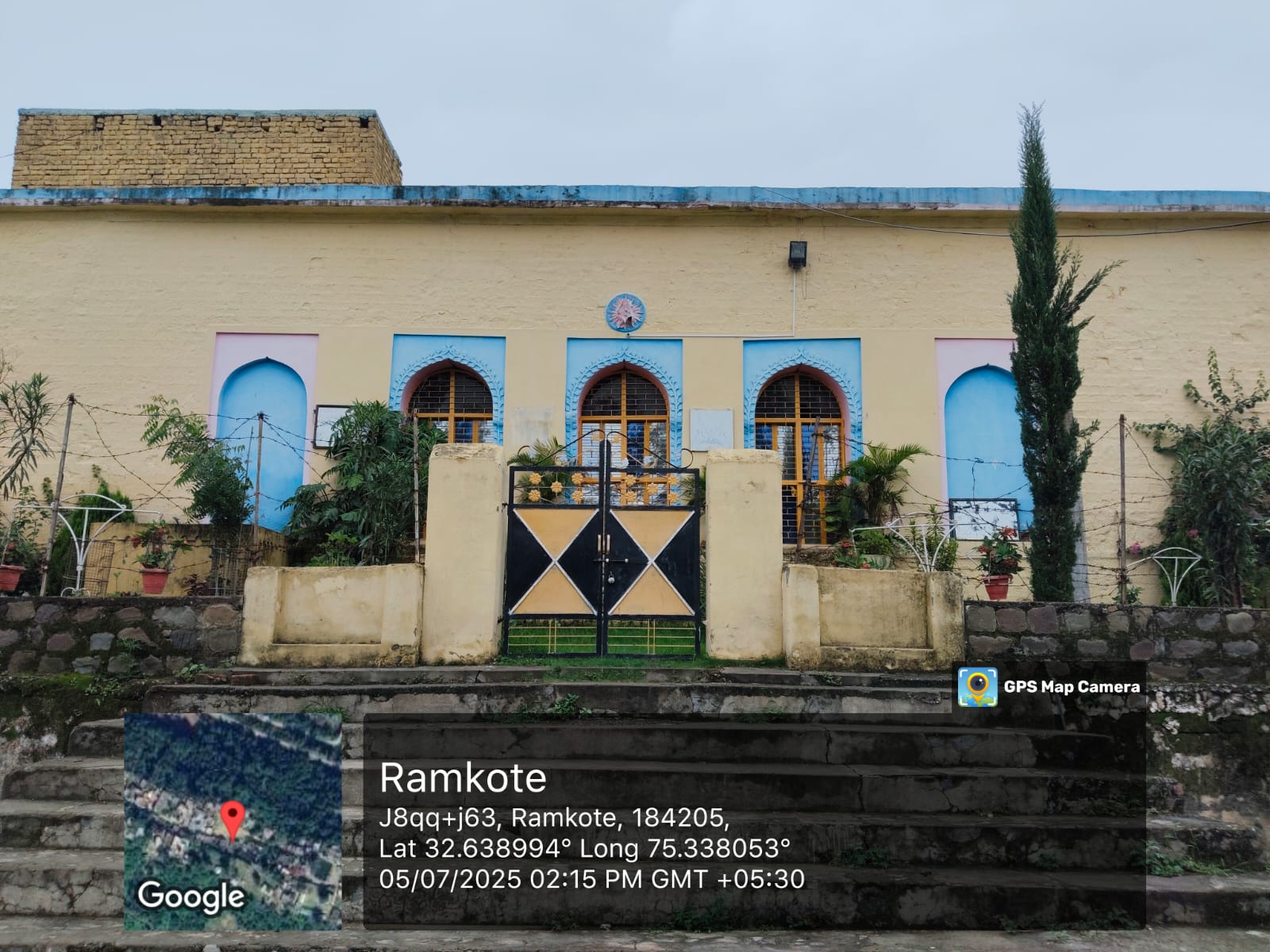Description
Introduction
Ramkot, a historically rich and culturally vibrant village located in Kathua district of Jammu and Kashmir, is more than just a geographical settlement; it is a symbol of Dogra heritage, resilience, and rural beauty. Situated around sixty kilometers from Kathua town, the district headquarters, the village stands on a hillock overlooking the scenic Basantar stream along the Dhar–Udhampur road. With its lush greenery, traditional lifestyle, and centuries of history, Ramkot is a place where the past and present coexist harmoniously. From ancient forts and temples to schools and health centers that now serve its population, Ramkot is an evolving village that embodies the spirit of Jammu and Kashmir’s rural life.
History and Heritage
Historically, Ramkot was known as Mankot, a name that traces its origin to Raja Manak Dev, who built a fort here in the late thirteenth or early fourteenth century. Over time, the principality flourished under his descendants and gained a special place in the Dogra cultural landscape. During the seventeenth century, under Raja Mahipat Dev, Mankot became a renowned center for miniature art, giving rise to the world-famous Mankot Kalam, or Mankot style of painting, which contributed significantly to the broader Dogra school of art. The principality maintained its independence for centuries before becoming a jagir under Dogra rulers in the nineteenth century. In 1848, the region was conferred upon Raja Ran Singh, and later renamed Ramkot in honor of Raja Ram Singh, son of Maharaja Ranbir Singh. The Dogra clan identity of “Mankotia” still reflects the historical roots of this area. Ramkot’s spiritual heritage is equally rich, with sacred temples such as the ancient Shiva temple featuring a majestic statue of Nandi, the Yogdhian or Jagannath temple, and the Narsingh temple. The traditional boulis, or stone wells, provided water for generations and are revered as symbols of community bonding. At the heart of the cultural landscape lies the open-air theatre known as the mandi, where Ramlila plays, folk dramas, and wrestling matches or dangals continue to be staged, sustaining centuries-old traditions and bringing people together in celebration of Dogri culture.
Geography and Location
Geographically, Ramkot occupies a unique place in Kathua district, both as a village and as a tehsil. The district itself is diverse, ranging from sub-tropical plains to temperate hills and alpine highlands, and Ramkot, situated on an elevated ridge near the Basantar stream, enjoys a moderate climate with scenic surroundings. The terrain around the village is hilly, dotted with forests, agricultural land, and small water bodies, creating an environment conducive to both farming and livestock rearing. Its location on the Dhar–Udhampur road makes it strategically significant, connecting it with other villages, towns, and major routes such as the National Highway 44. Though relatively remote compared to urban centers, Ramkot’s natural setting enhances its charm and offers potential for eco-tourism and heritage tourism in the future.
Demographics and Social Structure
According to the 2011 Census, Ramkot had a population of 2,724 individuals living in 534 households, with 1,441 males and 1,283 females, giving it a sex ratio of 890 females per 1000 males. The child population aged 0–6 was 350, with a child sex ratio of 759. Literacy in the village stands out as a point of progress, with 73.08 percent literacy compared to the state average of about 67 percent, with male literacy at 79.55 percent and female literacy at 65.99 percent. This indicates not only the spread of education but also the slow yet steady empowerment of women. Socially, Ramkot is a mix of communities, with Scheduled Castes comprising about 24 percent of the population and Scheduled Tribes around 10 percent. The Dogra Rajputs, particularly the Mankotias, form an important section of the social fabric, and their customs and traditions deeply influence local life. Occupations are primarily agrarian, with villagers engaged in cultivation, livestock rearing, and small-scale trade. Census records indicate that out of 769 workers, 700 were classified as main workers, meaning they had stable employment for most of the year, while others engaged in marginal work. With gradual population growth projected to cross 3,000 by 2025, the village continues to expand while retaining its traditional bonds of kinship and community solidarity.
Education and Health
Education has a long history in Ramkot, with the Government Middle School established as early as 1921. Over time, it was upgraded into a Government Higher Secondary School, which now offers education up to class 12 and provides facilities such as a library, playground, and drinking water. Though the infrastructure is basic, it serves as a lifeline for students from Ramkot and surrounding hamlets, making higher education accessible within the village. Other government primary and middle schools also function under the Panchayat jurisdiction, ensuring that children in every ward of the tehsil have access to at least basic education. Health facilities in Ramkot are modest but functional. The village hosts a Primary Health Centre staffed with doctors and paramedics, providing essential healthcare and first aid to the local population. More advanced healthcare facilities such as community health centers and hospitals are located in nearby towns beyond ten kilometers, which means villagers often have to travel for specialized treatments. Additionally, the presence of a veterinary hospital reflects the importance of livestock in the local economy and the government’s attempt to support rural livelihoods.
Connectivity and Infrastructure
Ramkot is connected by road through the Challa–Dayalachak road, which links it to National Highway 44, making travel to Kathua, Jammu, and Udhampur possible. The nearest railway station is Chak Dayala, located about twenty-eight kilometers away, while larger stations like Jammu Tawi and Kathua are eighty-three and fifty-five kilometers away respectively. The nearest airport is at Jammu, about eighty kilometers from the village. While the distance to major urban centers is considerable, Ramkot is not cut off from modern life, as it also has a functioning post office that offers not just mail services but also bill payments and basic banking services. Electricity and mobile connectivity have improved over the past decade, although rural infrastructure still faces challenges, especially in terms of road quality and transport facilities. Nevertheless, with government schemes and Panchayati Raj institutions working at the grassroots level, Ramkot is gradually improving its civic infrastructure.
Culture and Everyday Life
The cultural life of Ramkot is a vibrant expression of Dogri traditions. Festivals such as Navratri, Diwali, Holi, and Baisakhi are celebrated with devotion and communal harmony. The staging of Ramlila in the village mandi, along with traditional dangal wrestling competitions, not only entertains but also strengthens social bonds. Local folk songs, dances, and the Dogri language are integral to daily life, passed down through generations as part of the oral tradition. Agriculture remains the backbone of the economy, with fields of maize, wheat, and rice surrounding the village, while livestock such as cows, buffaloes, and goats supplement household income. Markets are small but vibrant, supplying daily needs and showcasing the simplicity and self-sufficiency of rural life. Even as younger generations aspire to move to cities for education and jobs, they remain emotionally attached to their ancestral village and return during festivals, weddings, and important occasions.
Festivals and Celebrations
Festivals in Ramkot are not just religious occasions but also moments of collective joy, social bonding, and cultural reaffirmation. Being part of the Dogra heartland, the village celebrates major Hindu festivals like Diwali, Holi, Navratri, and Baisakhi with great devotion and enthusiasm. During Navratri, villagers visit temples such as the Yogdhian and Narsingh temples, offering prayers and organizing special community meals. The nine days are filled with bhajans, kirtans, and traditional dances performed by children and youth, symbolizing devotion to the goddess and continuity of age-old customs. Diwali, the festival of lights, transforms the village into a glowing landscape of lamps and diyas, while Holi fills the air with colors, laughter, and playful gatherings in open fields. Baisakhi, marking the harvest season, holds special significance as it symbolizes prosperity and gratitude for agricultural abundance; on this day, fairs are held in and around Ramkot where people gather, buy household goods, and enjoy folk music and dances. Perhaps most unique to Ramkot is the grand staging of Ramlila during Dussehra, performed in the open-air mandi, which becomes a cultural hub drawing spectators from nearby villages. Local actors, often villagers themselves, take pride in enacting the epic Ramayana, while traditional wrestling bouts or dangals add to the festive spirit. Weddings too resemble festivals, with traditional Dogra rituals, music, and dance forming an essential part of social life. These festivals not only reinforce cultural pride but also provide opportunities for economic activity, as small vendors, food stalls, and artisans participate actively, making celebrations a blend of devotion, entertainment, and livelihood.
Cuisine and Food Traditions
The cuisine of Ramkot, like that of much of Jammu and Kashmir’s Dogra belt, reflects simplicity, nutrition, and the agricultural patterns of the region. The staple diet consists of wheat, maize, and rice, accompanied by seasonal vegetables and pulses. Popular dishes include madra (a yogurt-based curry with chickpeas or kidney beans), rajma chawal (kidney beans with rice, often flavored with local spices), and ambal (a sweet-and-sour pumpkin preparation unique to Dogra kitchens). During festivals and special occasions, khata meat (mutton cooked in tangy gravy), dal pattis, and varieties of chutneys made from pudina, anardana, or walnut are prepared, reflecting the resourcefulness of rural households. Sweet dishes such as patisa, khoya barfi, and gulab jamun are popular during weddings and fairs, while simple homemade sweets like rice kheer are common during religious rituals. Tea, especially salted noon chai and sweet kehwa, is consumed frequently, particularly during winters when the temperature drops in the hilly terrain. Dairy products like ghee, curd, and buttermilk form an integral part of the daily diet, thanks to widespread cattle rearing. Traditional cooking is done in earthen or brass vessels on wood-fired chulhas, giving food a distinct smoky flavor. In recent years, modern packaged foods have entered village shops, but households still prefer home-grown, organic, and freshly cooked meals. Food in Ramkot is not just nourishment but also a symbol of hospitality, as guests are treated with elaborate spreads and neighbors often share dishes during festivals, strengthening the bonds of community living.
Lifestyle and Occupations
The lifestyle of Ramkot reflects the rhythm of a traditional agrarian society interwoven with modern aspirations. Agriculture remains the primary occupation, with fields of maize, wheat, and paddy forming the backbone of livelihoods. Families wake up early, tend to their cattle, and then head to fields with ploughs, tractors, or simple tools depending on their resources. Livestock rearing—cows, buffaloes, goats, and sheep—supplements the economy by providing milk, meat, and wool. Women play a central role in household management, farming, and festivals, balancing domestic duties with agricultural work. Education has gradually changed the outlook of younger generations, with many boys and girls aspiring for careers in teaching, government jobs, or the armed forces, which is a respected profession among Dogra families. The simple houses, often built with brick and mud in the past, are increasingly being replaced with concrete structures, though traditional designs with sloping tin roofs remain common due to heavy rainfall in certain seasons. The village life is marked by simplicity, hard work, and communal cooperation, with neighbors helping each other in weddings, crop harvesting, and religious events. While modern technology like mobile phones, motorcycles, and internet connectivity have entered Ramkot, the essential fabric of life remains rooted in traditional values of respect for elders, love for the land, and hospitality toward guests.
Tourism Potential
Though primarily a rural settlement, Ramkot has immense tourism potential due to its historical, cultural, and natural appeal. The remains of the old fort built by Raja Manak Dev still stand as a testimony to the village’s glorious past, attracting history enthusiasts. The temples, with their serene ambiance and artistic carvings, invite pilgrims and tourists alike. The scenic beauty of the Basantar stream, combined with the lush green surroundings and clean village air, makes it an ideal spot for eco-tourism. The open-air mandi and the Ramlila tradition could be promoted as cultural tourism, showcasing Dogri folk theatre to outsiders. Trekking, nature walks, and visits to nearby towns such as Billawar and Udhampur can further enhance the tourism circuit. With proper promotion, homestays, and local handicrafts, Ramkot could develop into a small but meaningful destination for heritage and rural tourism, providing economic benefits to villagers while preserving cultural traditions.
Photos
Videos
Location Map
Contact Information
| Address |
Kathua District,Pincode-184205 |
| Phone Number | |
| Website | https://jkpanchayat.jk.gov.in/homeview.php?panchayat=Ramkot&block=Nagrota+Gujroo |

